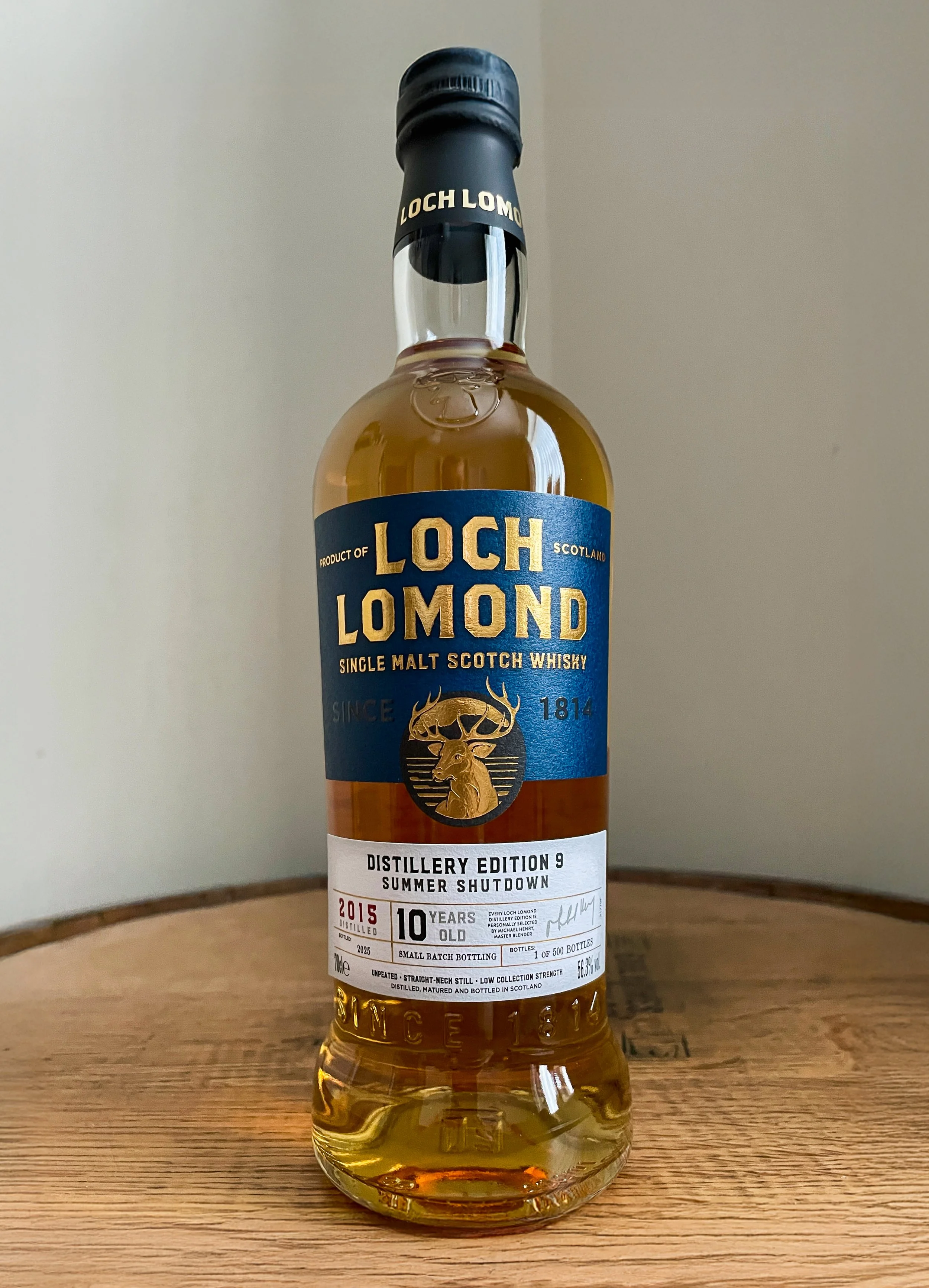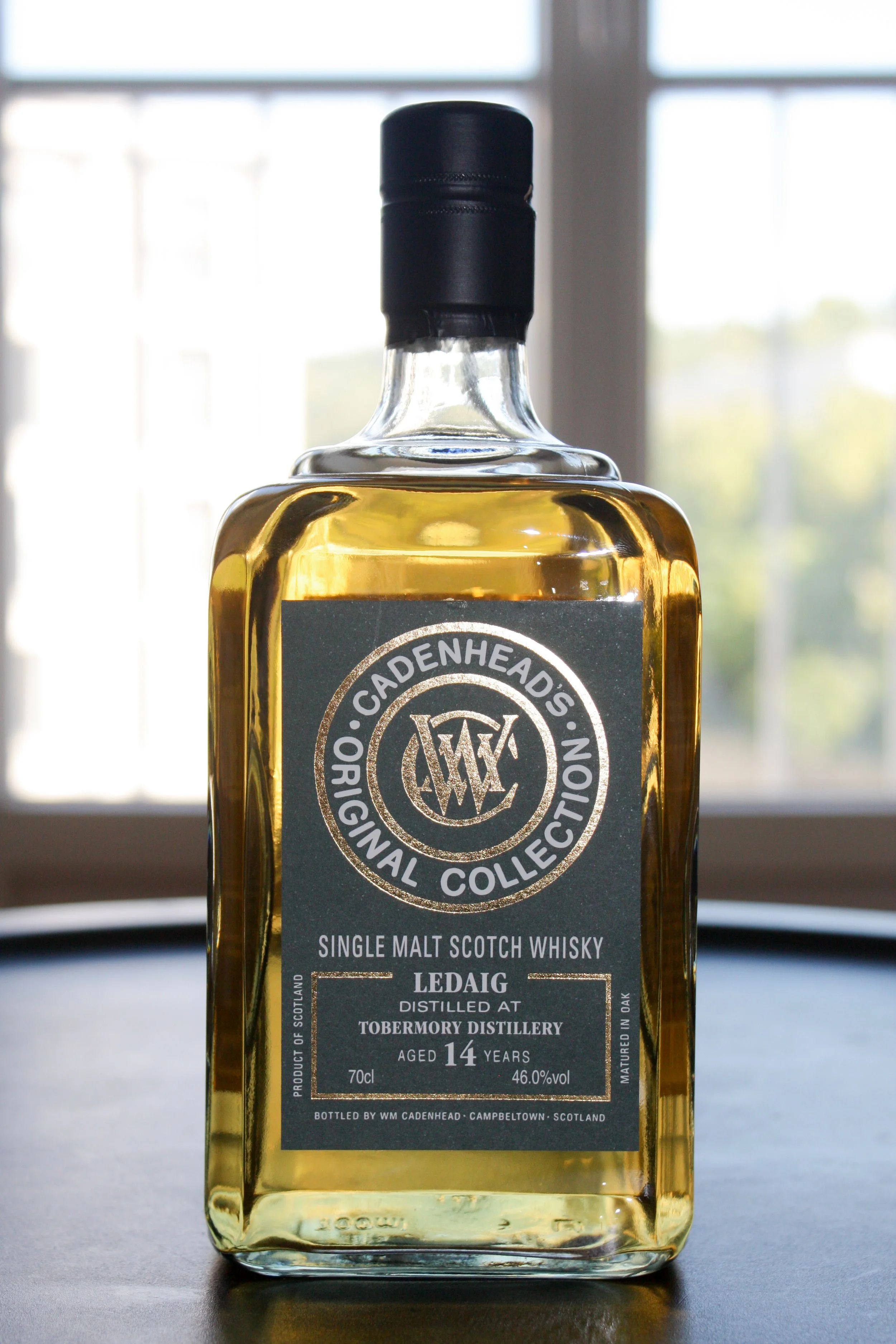Springbank Cage Bottling 10yo 1st Fill Bourbon
Warehouse 6, Rotation 600 | 59.9% ABV
Score: 8/10
Something Special.
TL;DR
The closest you can get to pure, unadulterated Springbank character
Journey To The Hallowed Ground Of Whisky Pt.2
A Day to Remember
Up at a reasonably early time, we get ourselves aligned for the day with double portions of muesli and two slices of toast. Our Springbank tour is at 10am and we’ve already decided over breakfast to forgo the samples at the end and take Joyce’s advice to ask for driver’s drams instead.
The first person to arrive at the till at the turn of the hour is laden with rucksacks, bags and intent. Four cage bottles are quickly thumped onto the desk and the staff are astonished as they’ve not even had a chance to get behind the desk yet – they’re still wheeling out hand-sanitiser stations and unfolding signage. He barks that he’s phoned ahead and it’s been approved and the staff are at first reluctant but, after further checks, confirm that it has been given the green light. He smiles a tight smile and offers that they’re for his friends back home. As the cost is totalled, he glances back to the stack of core range bottles and asks to take one of each of those and one of each of the four hand-fills. It’s a lot of whisky for one person, but the reality is he’s completely entitled to do this. There are no rules against buying loads of whisky, and nor should there be. Just because I can’t afford to, or don’t want to, doesn’t mean others shouldn’t. The only issue here is our tour is due to start, and there’s still six people behind him with white knuckles wrapped around cage bottles. Due to laws in Scotland, no-one can buy alcohol before 10am, so everyone is stuck in an awkward limbo.
I’m torn about what to do. I quite fancied getting one of these cage bottles because I want to see what the hype is about, but if I take one and join this queue, I’ll be contributing to our tour lateness. The atmosphere in the shop, now 10:02am, is potently electric. The collective energies of the most excited among the patrons is making the air tangibly charged. However, if I don’t take one of the quickly disappearing cage bottles, I might not have the chance afterwards. It's a crazy situation and I’m aggravated that I’m even having to think about these things, but more people are appearing in the shop and each one makes a beeline to the cage, before which I now stand. I can see they’re frustrated that I’m here, in their way and stopping them from grabbing the “good stuff”. So I decide, reluctantly, to look at all the remaining bottles in the cage; I’m not being purposefully obtuse, but I’m also not going to let rabid bottle snafflers ruin my morning.
“Ben offers us a handful of barley and I eat some. It tastes like lettuce”
Finally the till queue dissipates and I swing over to quickly pay for my bottle, allowing the tour attendees to assemble. Ben is our guide for the next 45 minutes and, with a loud instruction, gets our tour underway. Out of the shop, around the side and into an unmarked doorway, the malting floor is abruptly revealed to gasps and wonder. There’s something hugely impressive about a large room completely carpeted with furled rows of barley. The mesh-covered windows dotting the thick stone walls are wide open and a steady breeze wafts malty scents around our heads. Ben offers us a handful of barley and I eat some. It tastes like lettuce – not unpleasant. We’re led out to the external peat store before making our way back into the building via the kiln, grain store and mill room. We’re shown the century old cast iron mash tun with torture chamber mechanics within, then upwards to the six giant boat-skin washbacks that currently hold wort yet to be yeasted. Even without yeast the liquid is effervescent and alive.
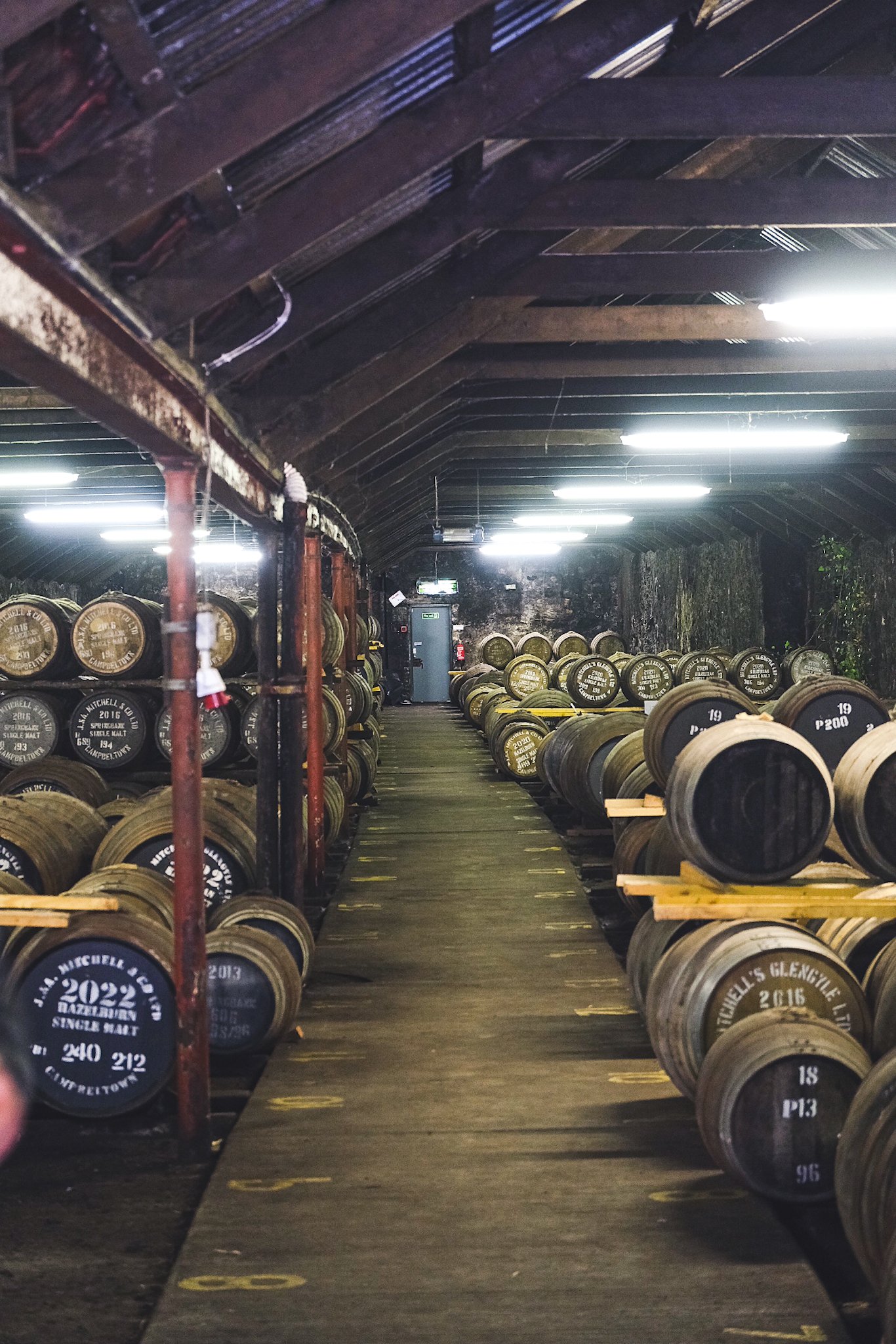
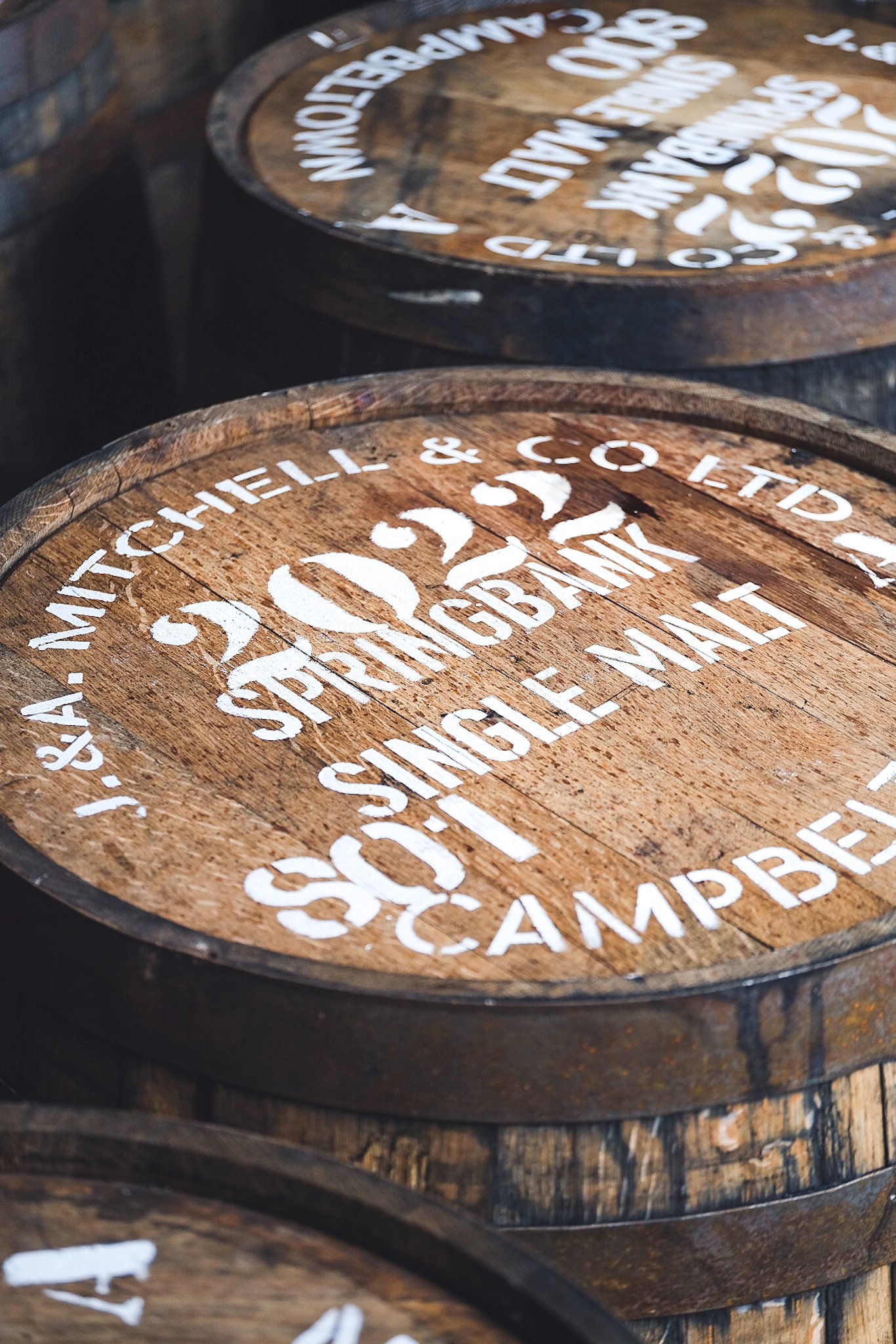
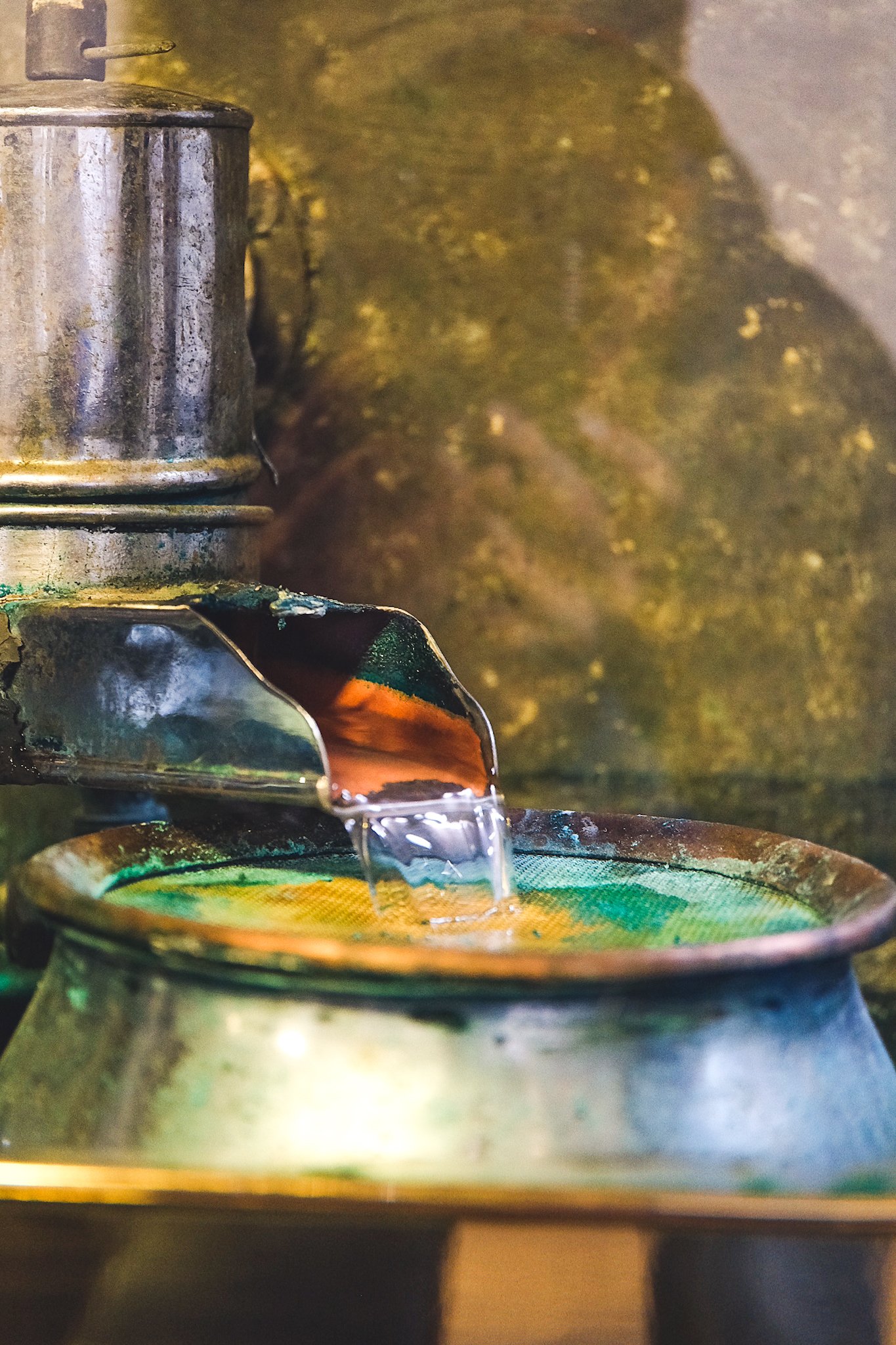
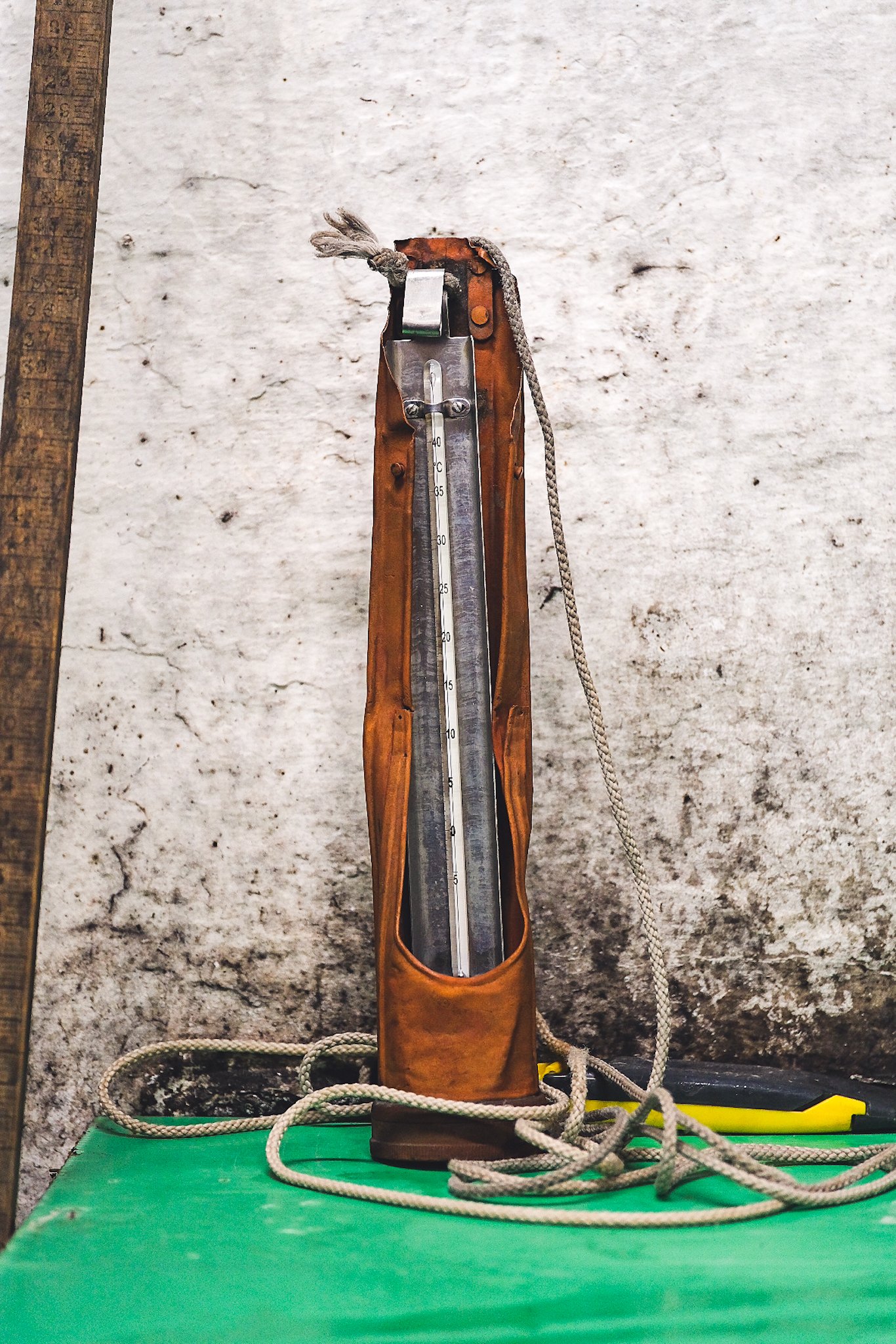
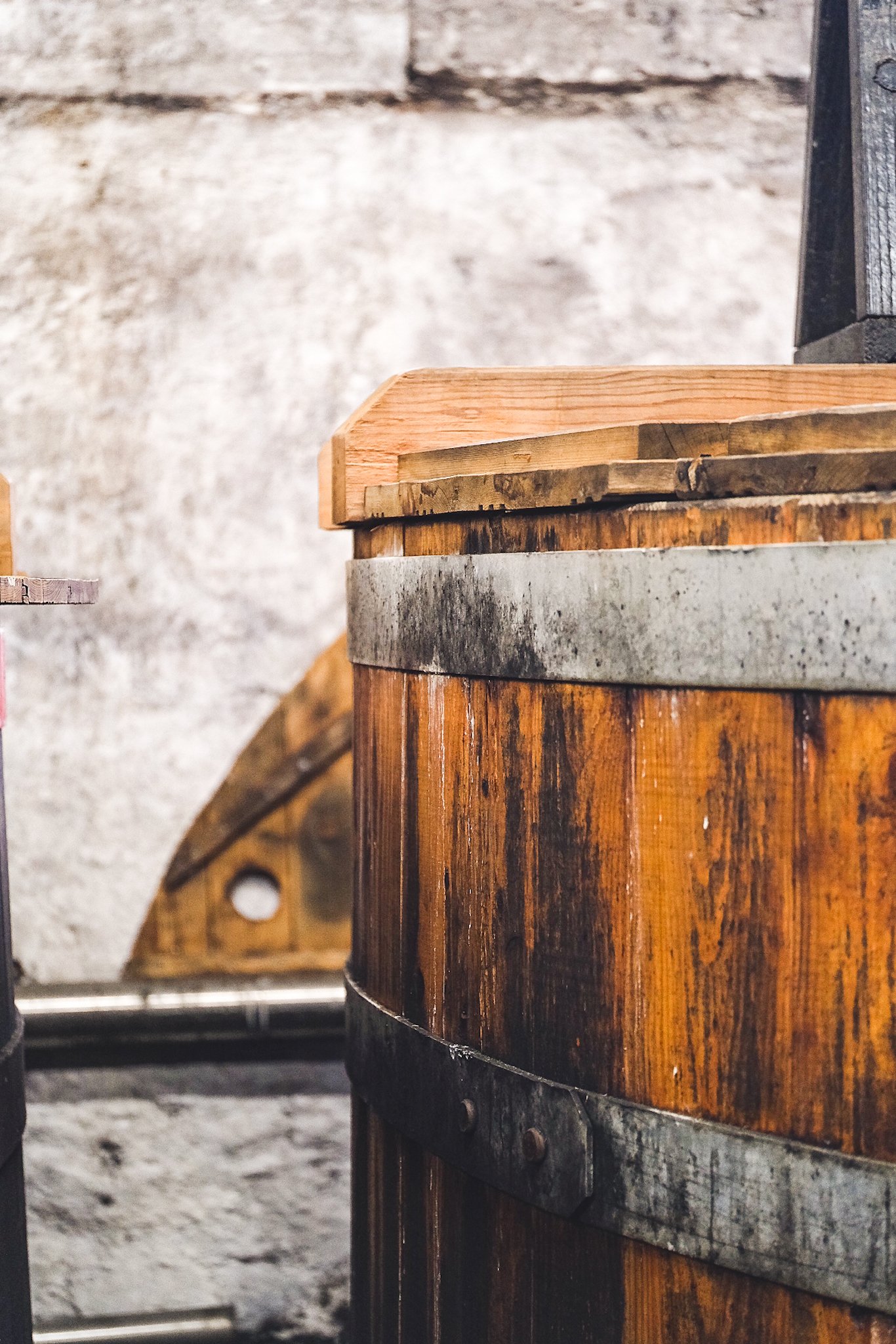
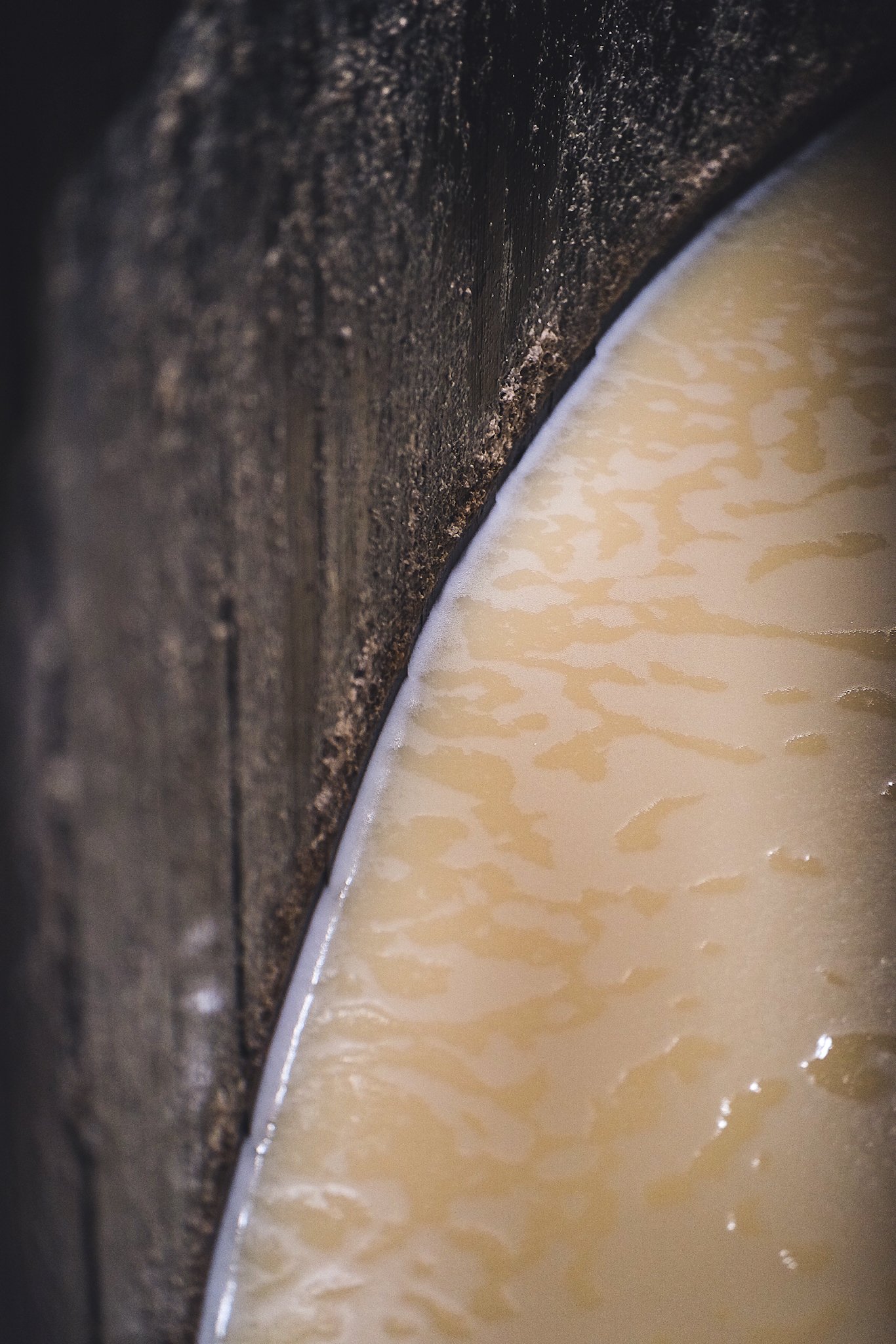
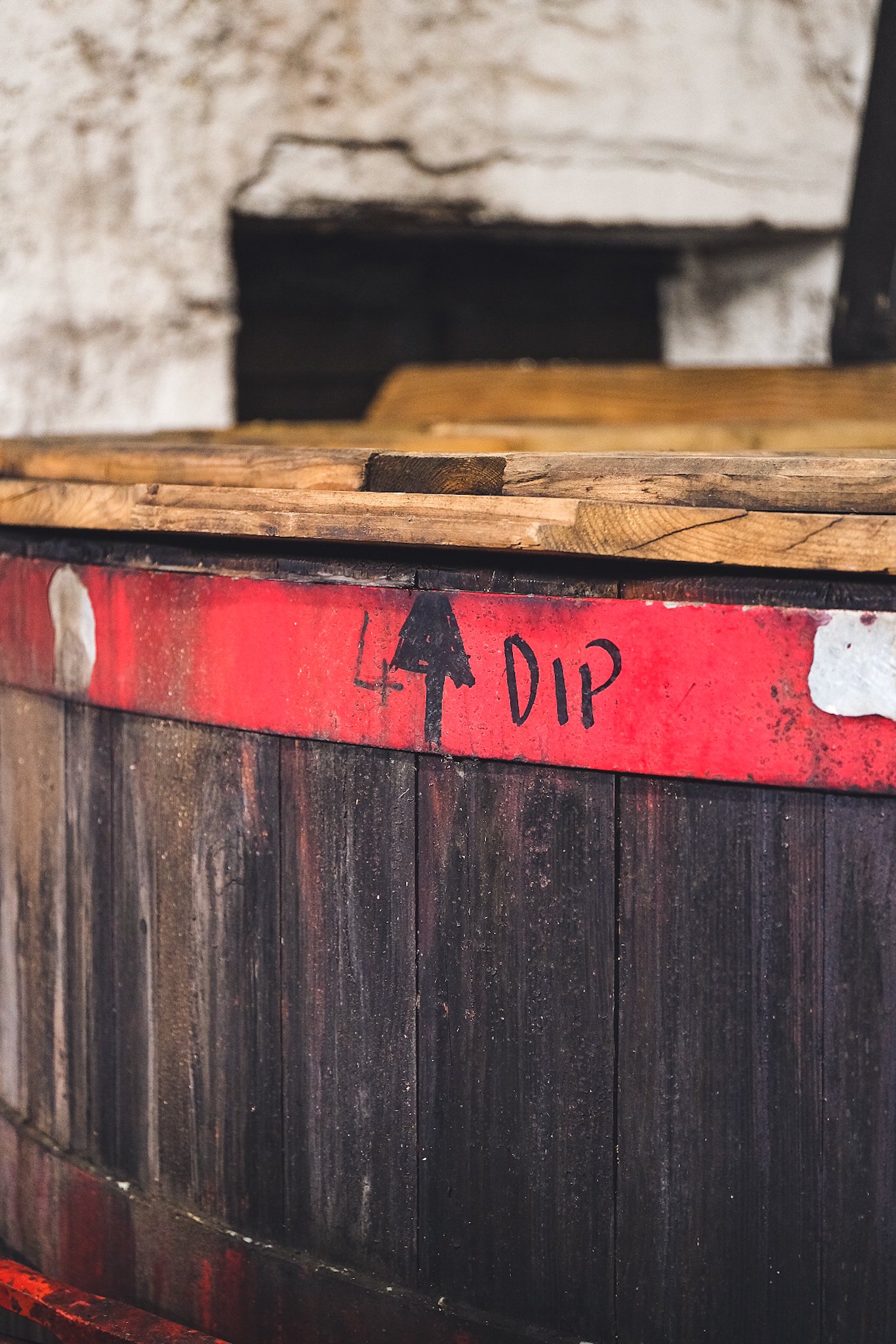
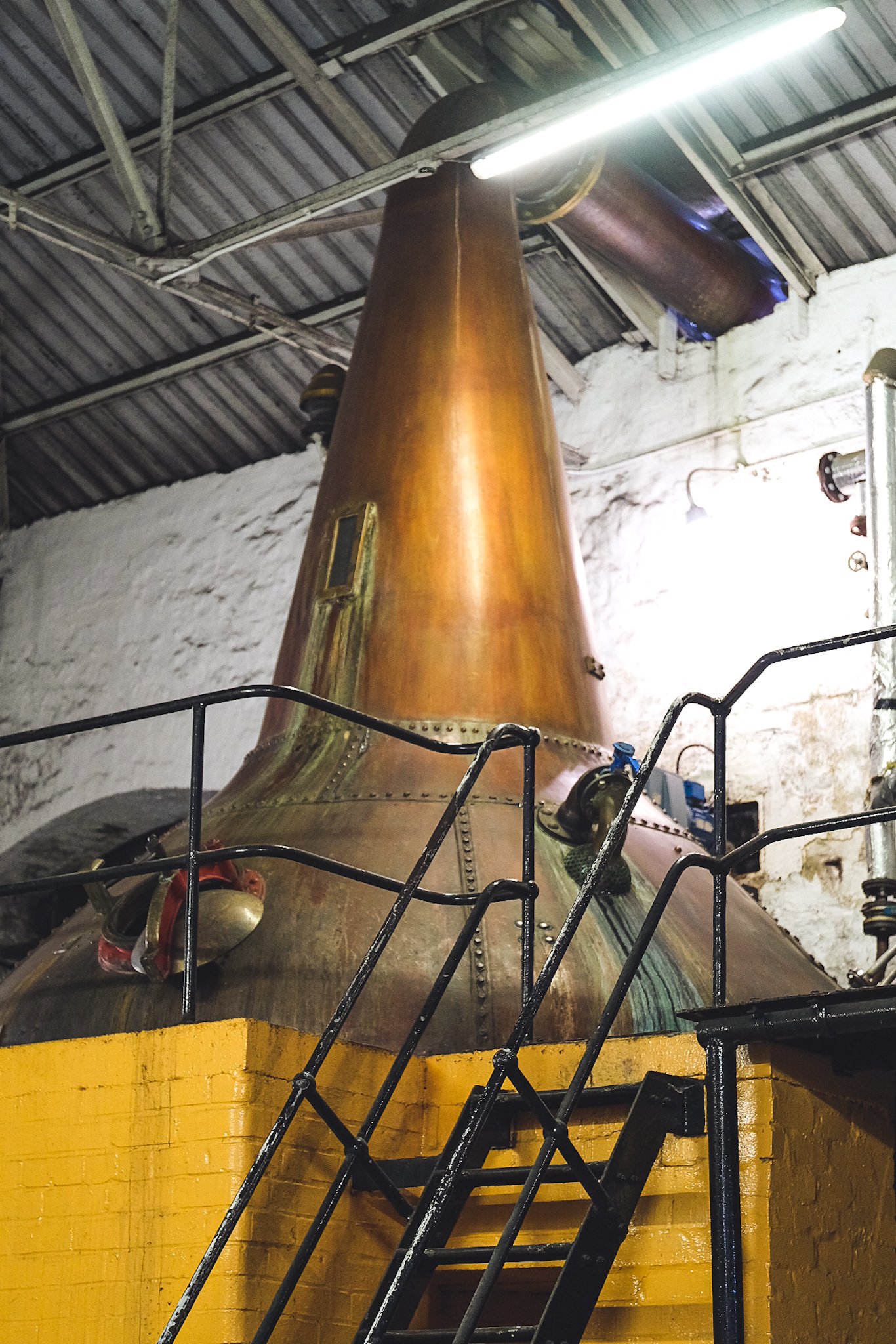
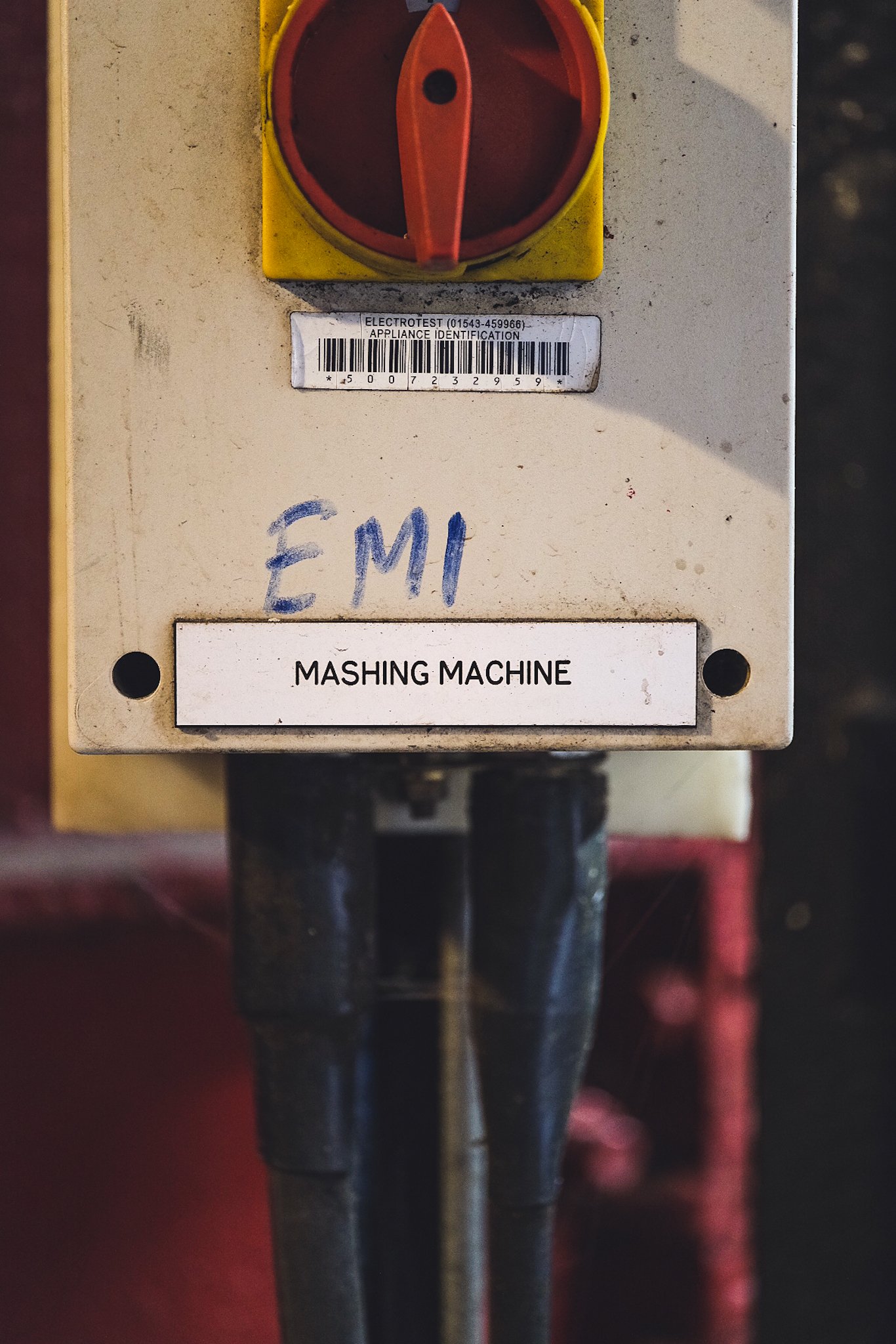
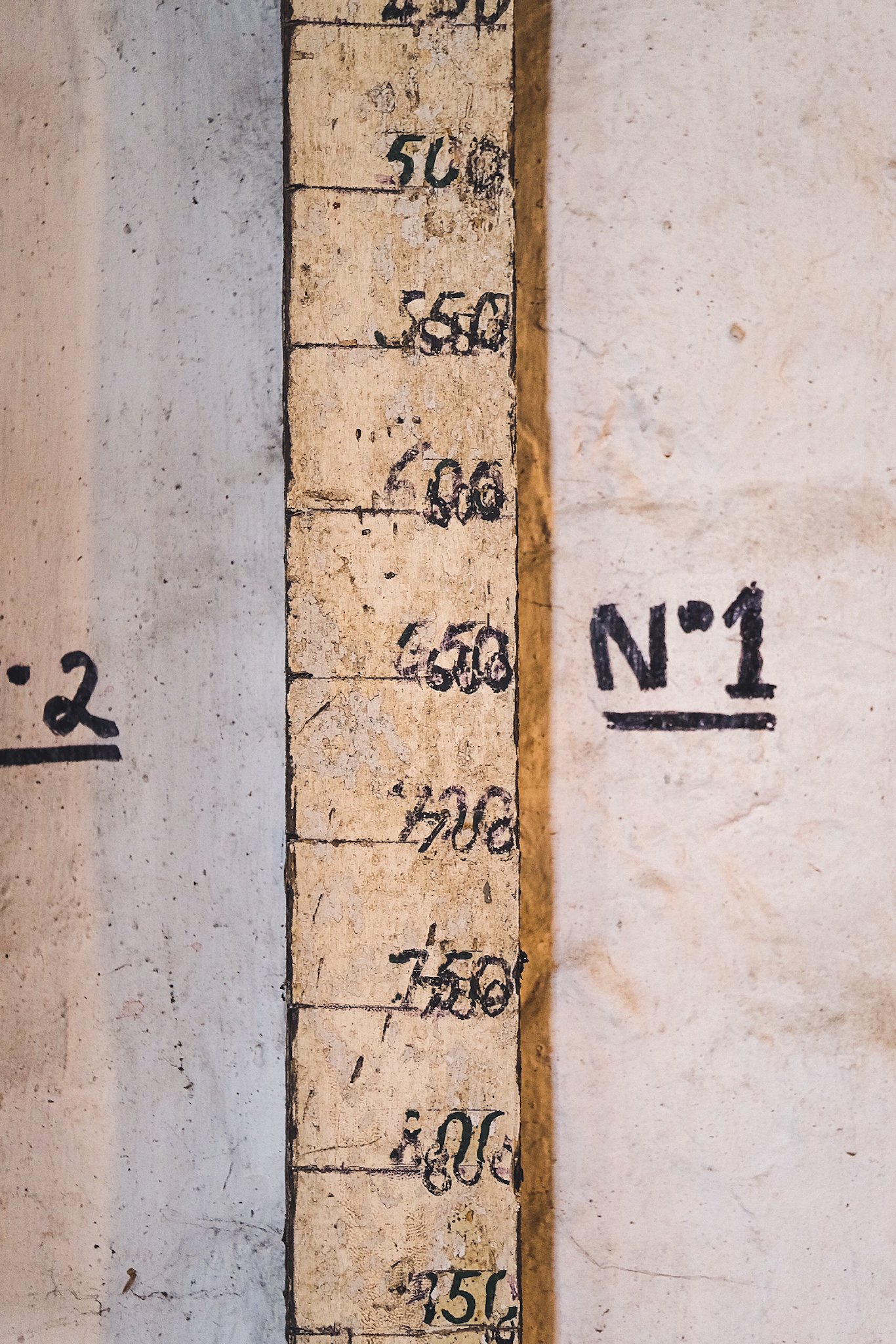
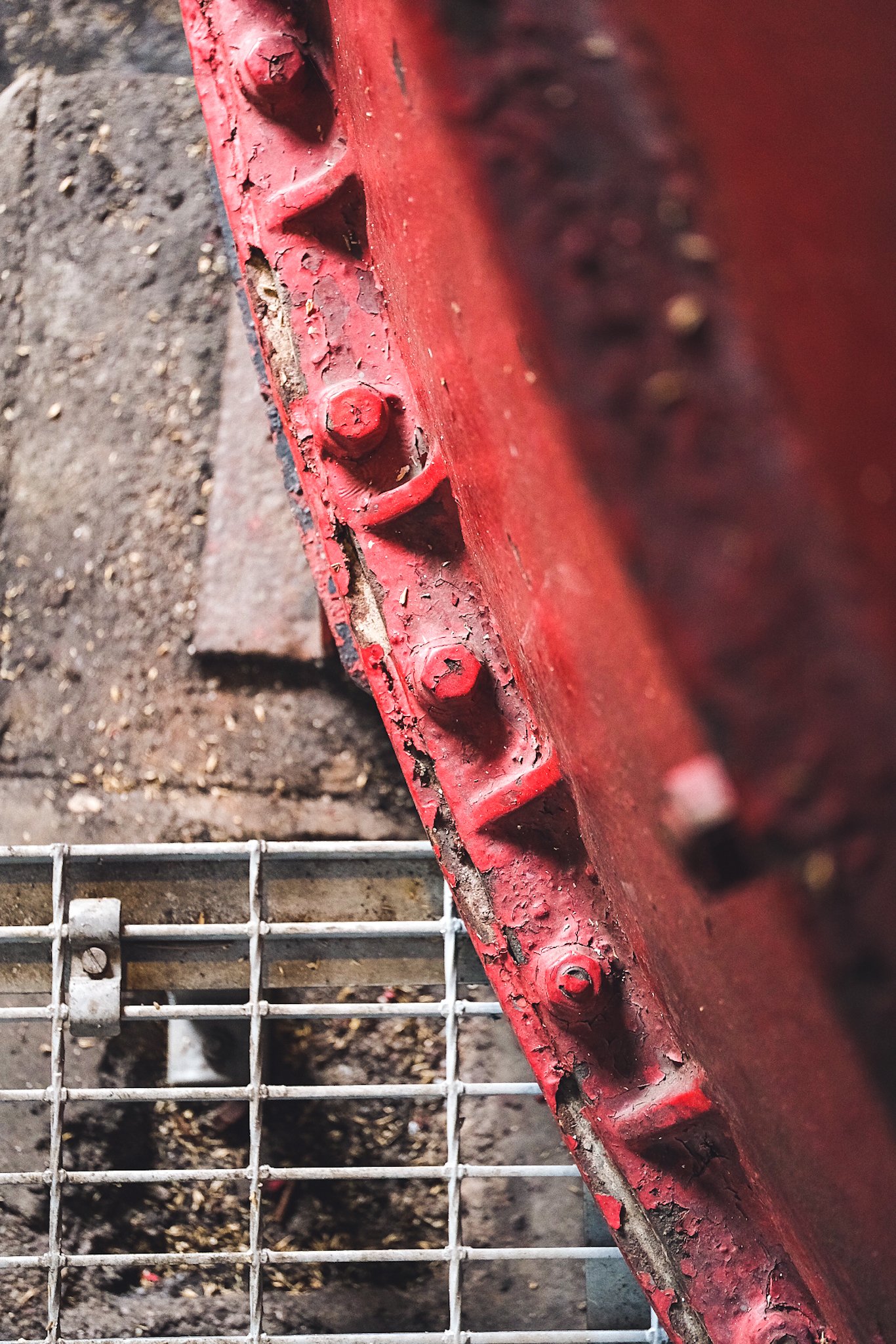
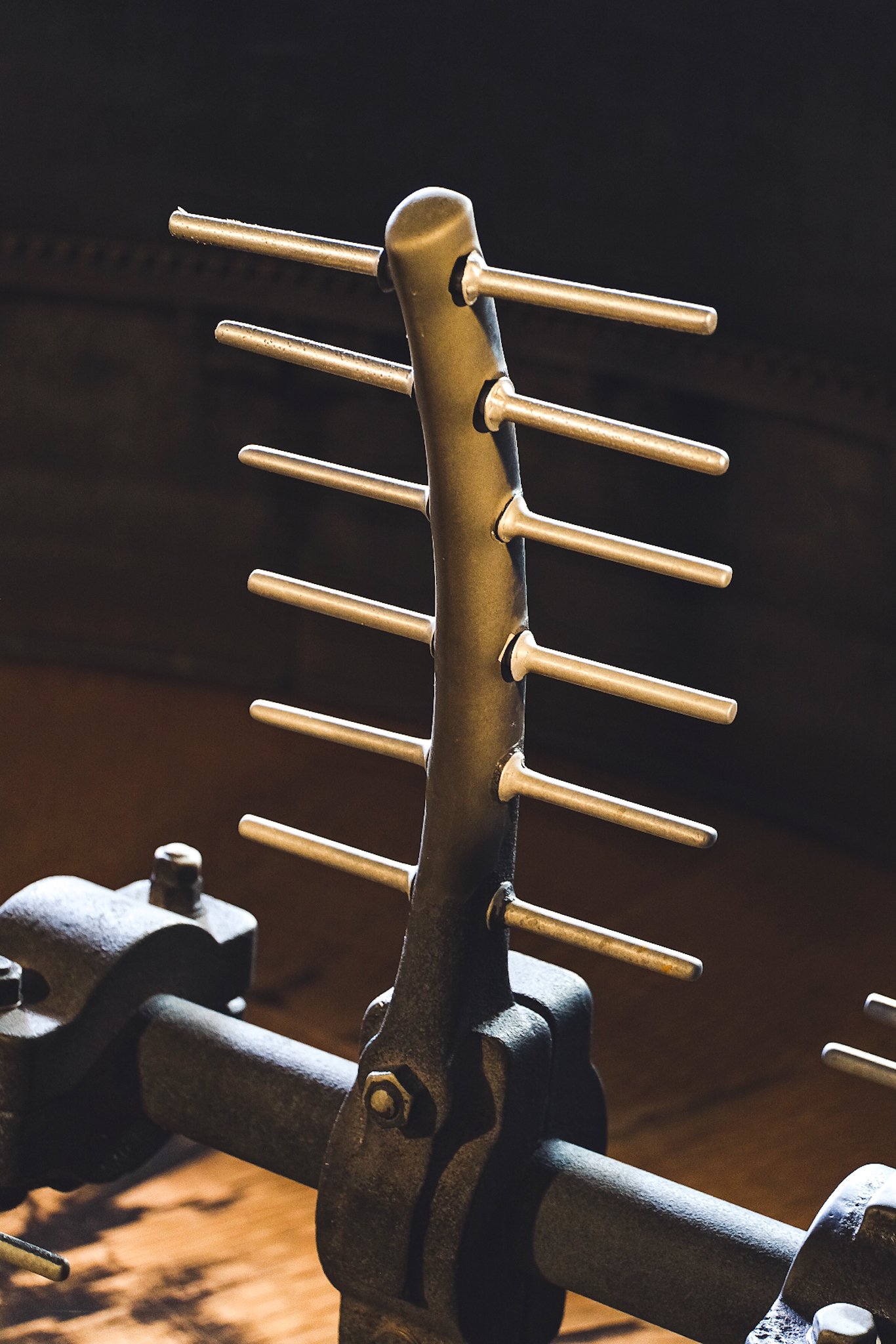
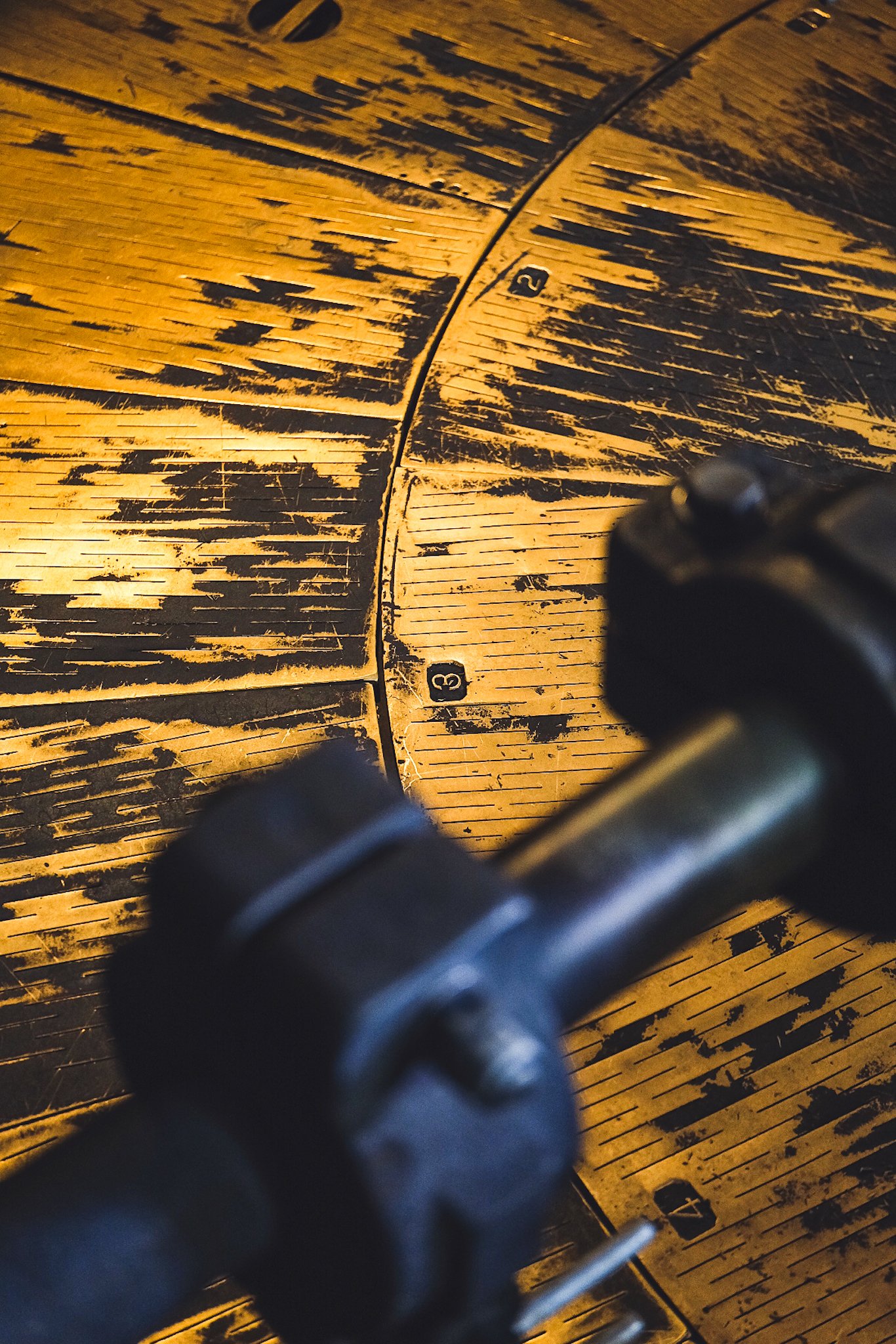

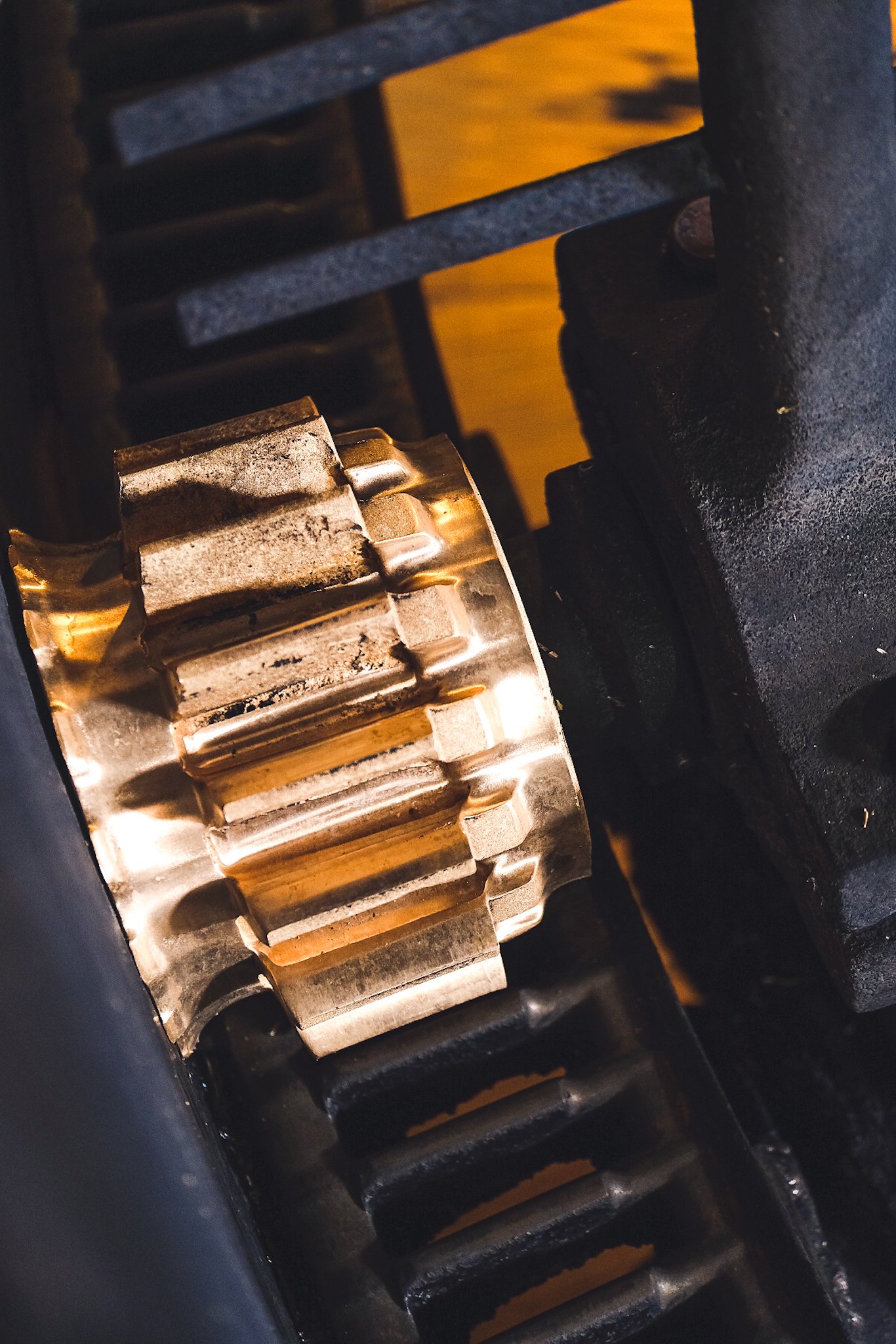
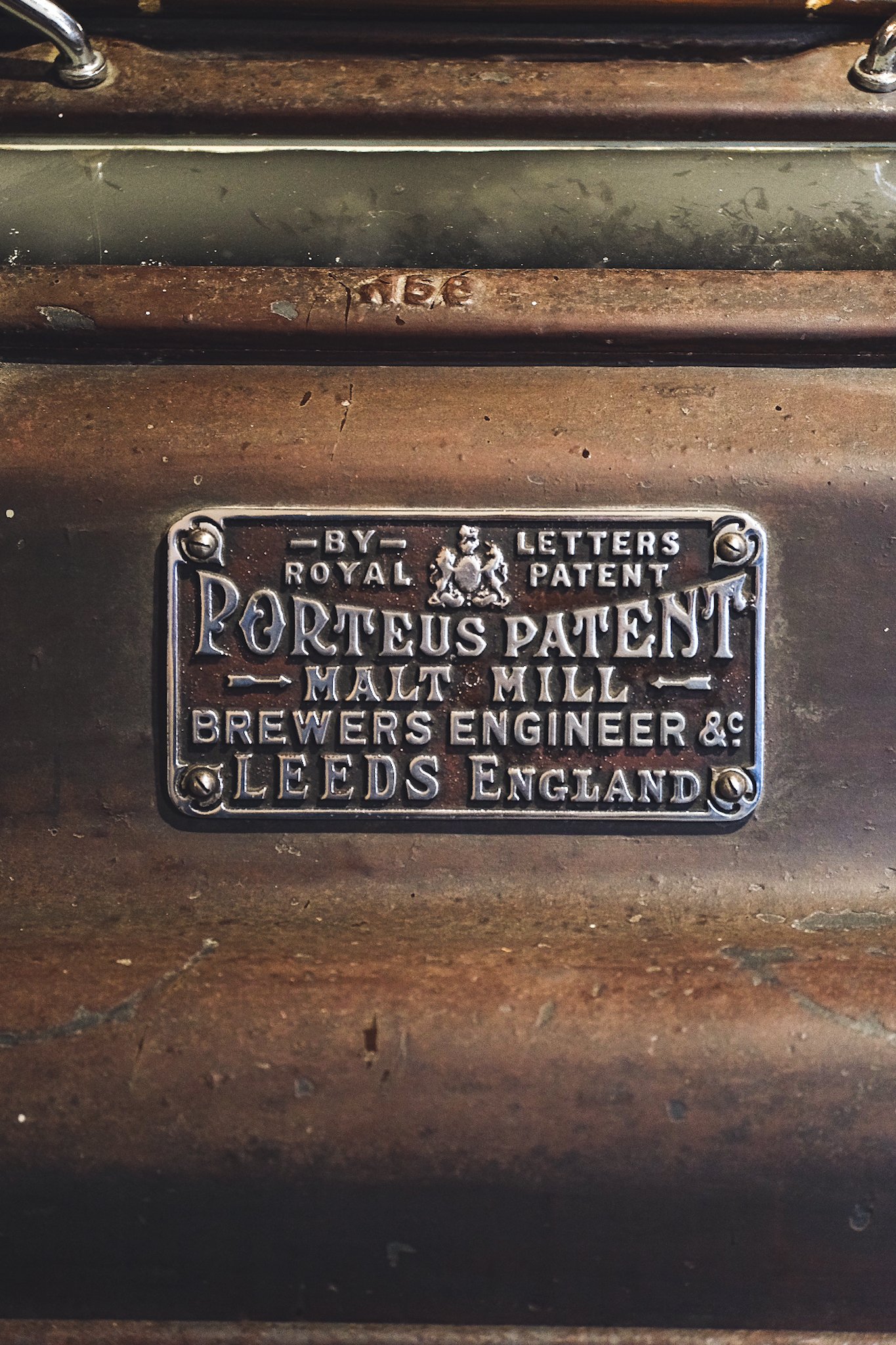
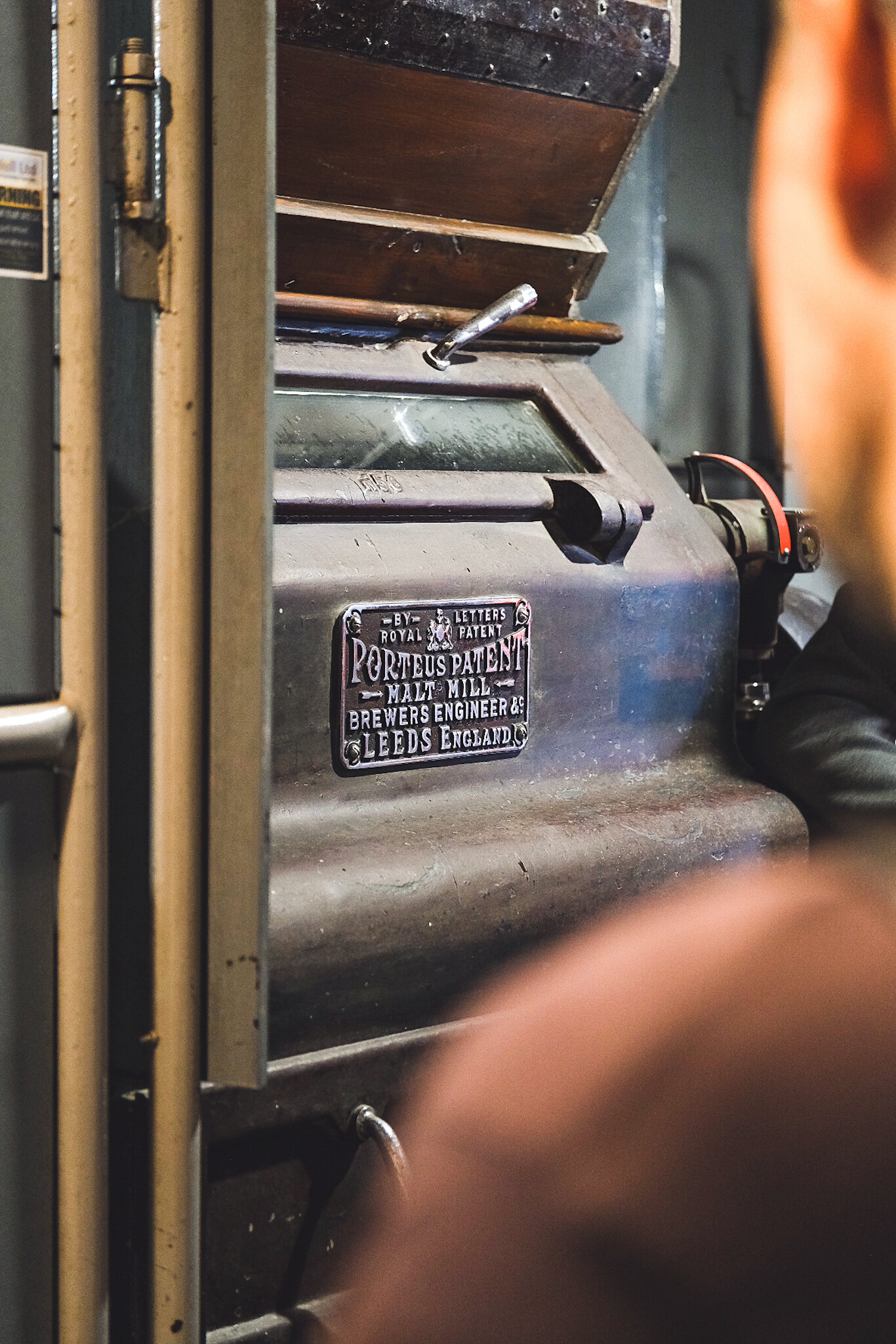
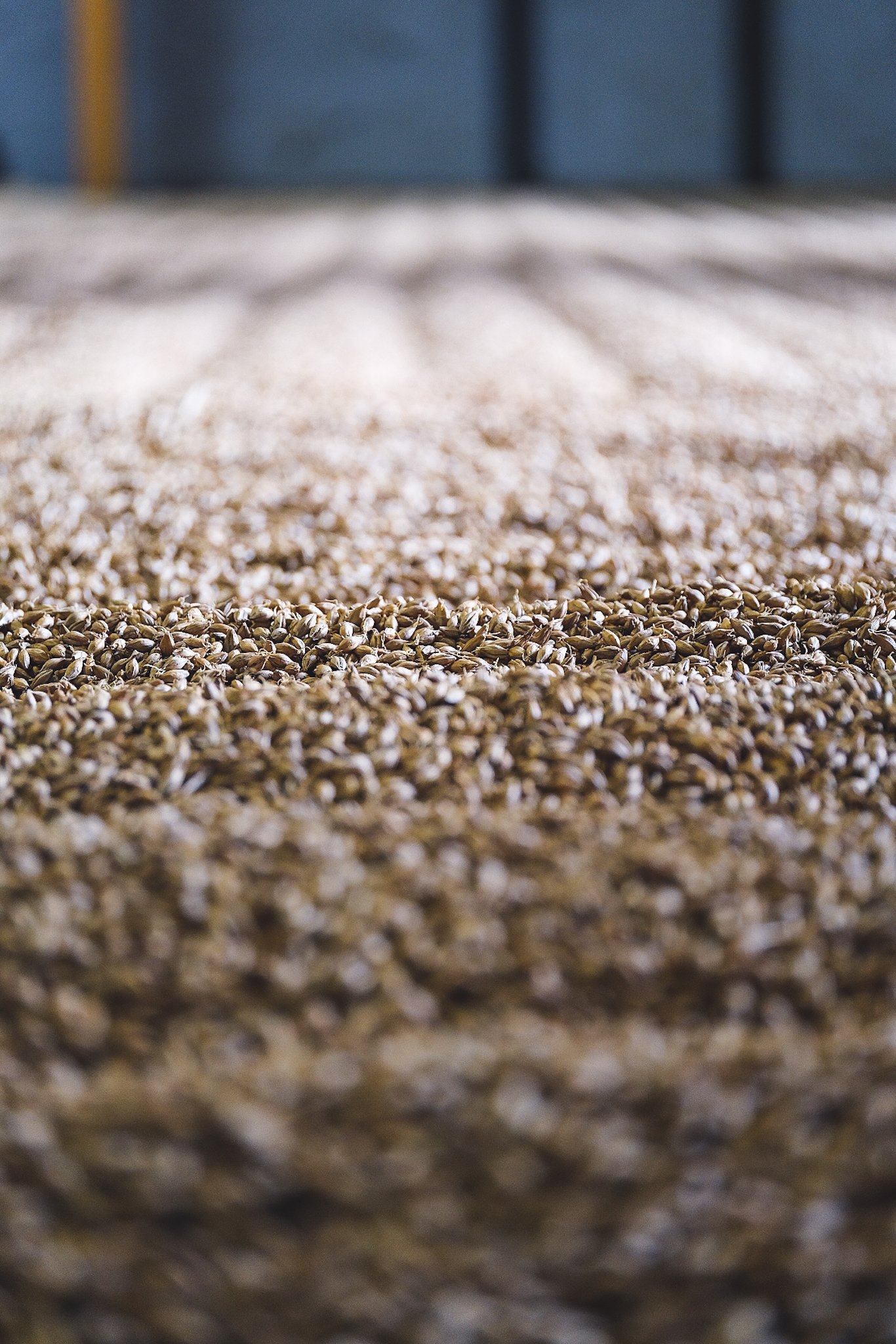
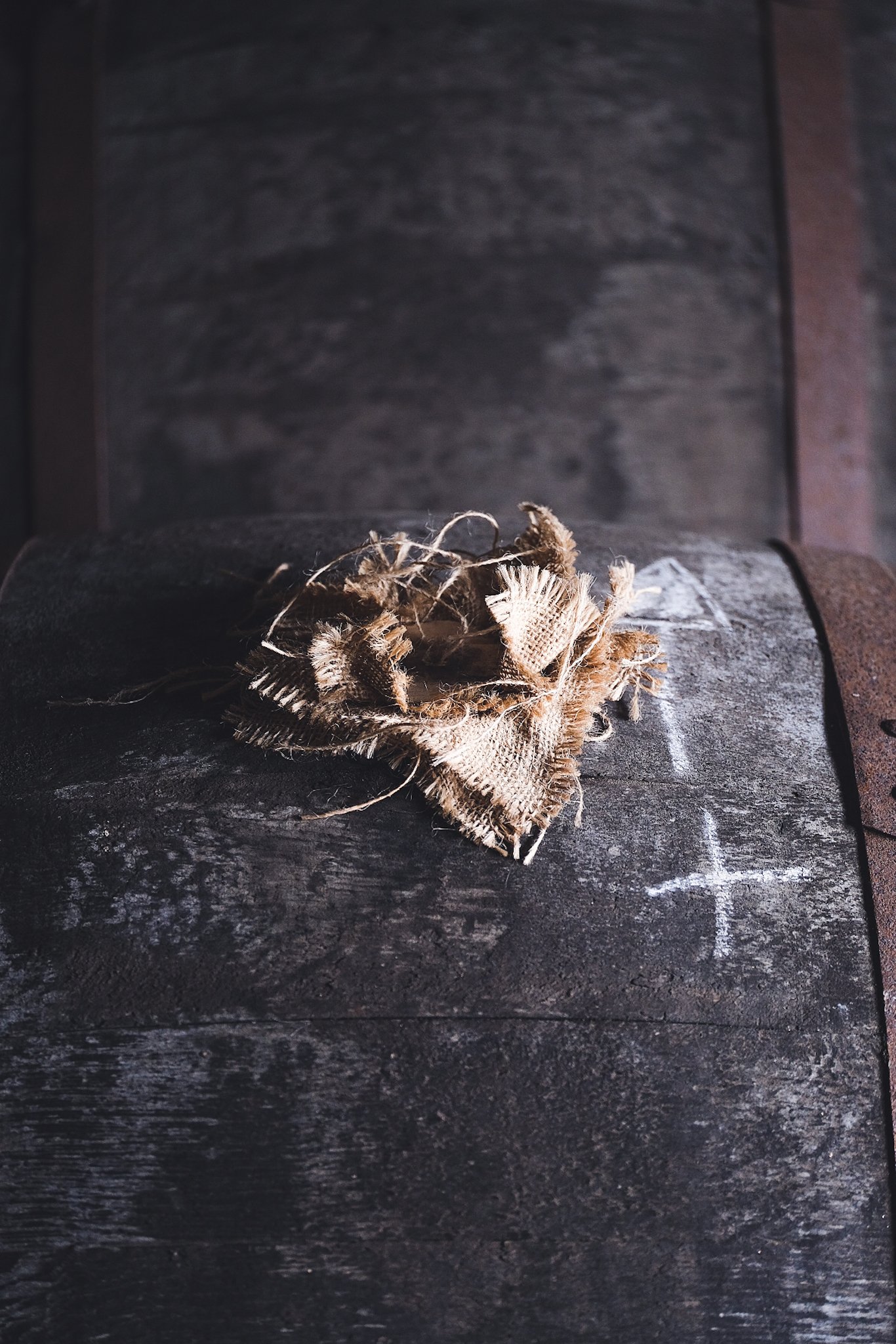
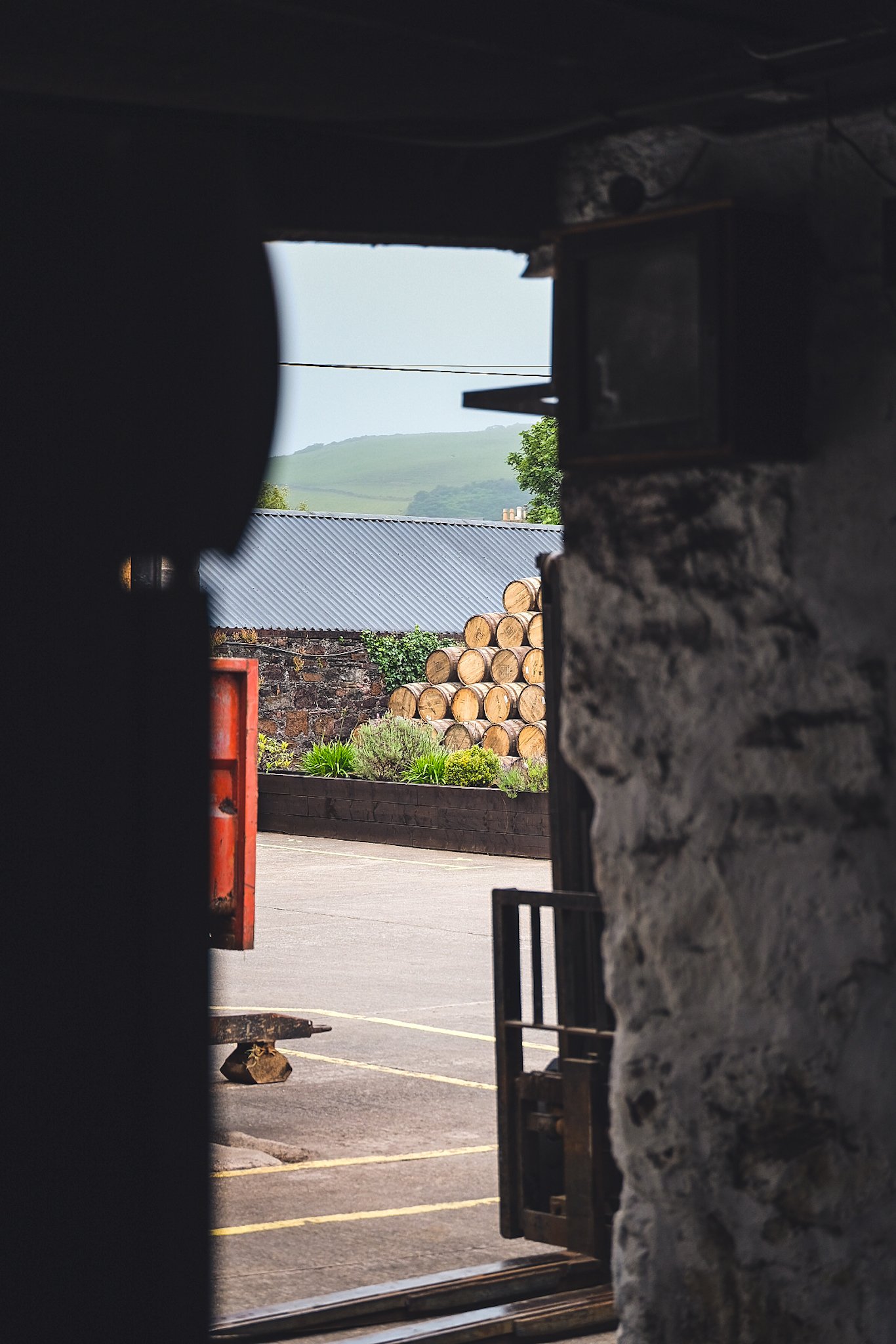
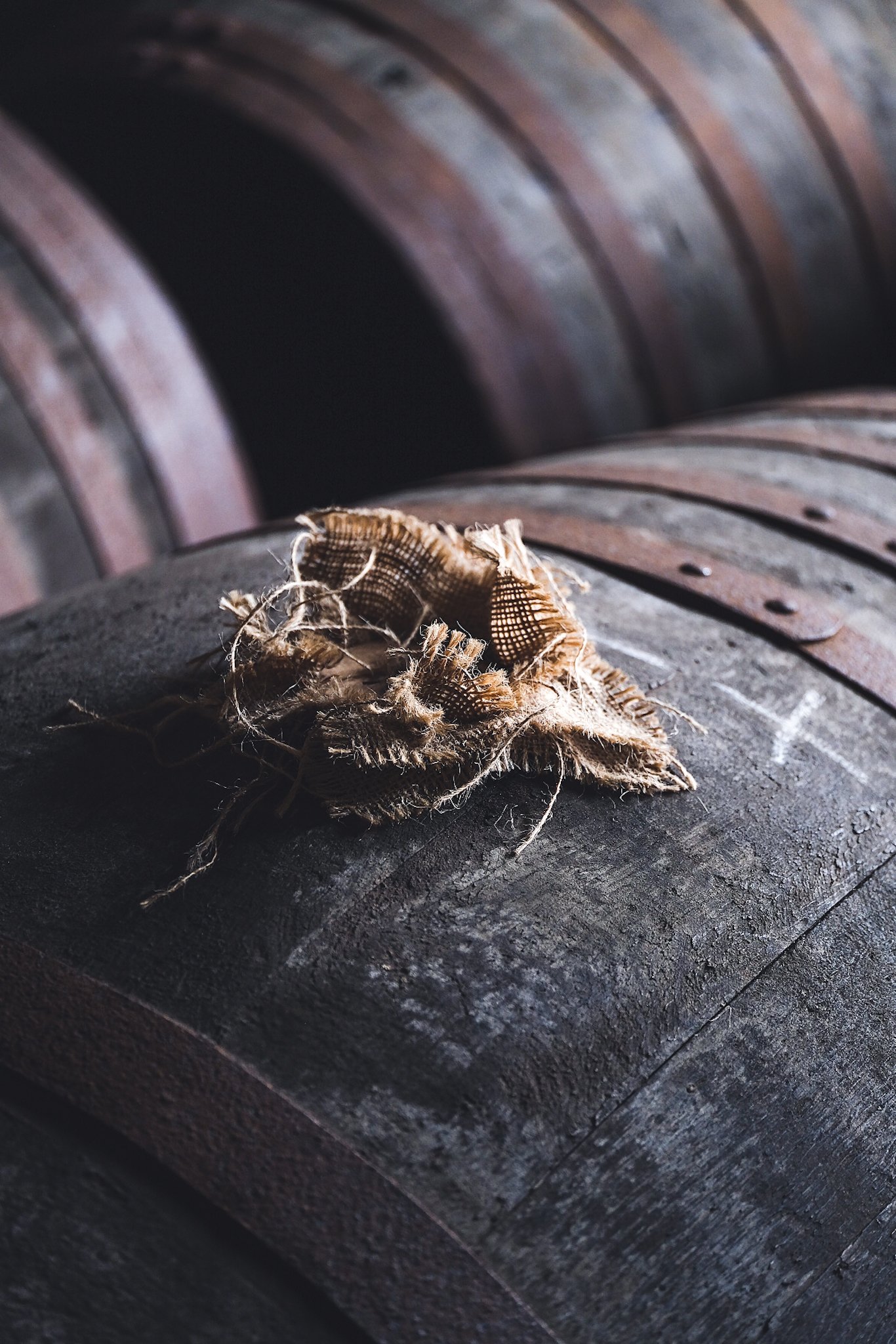
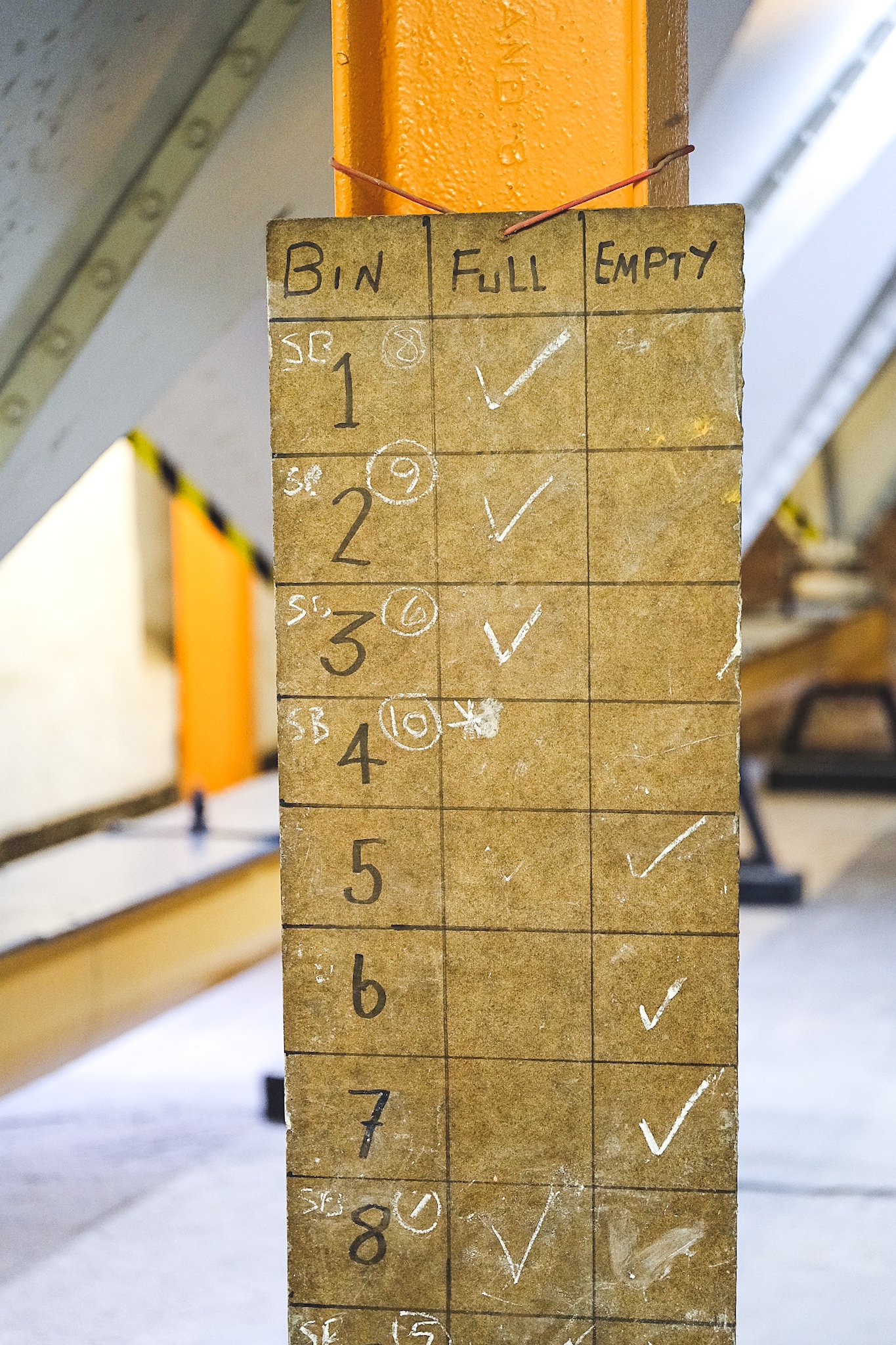
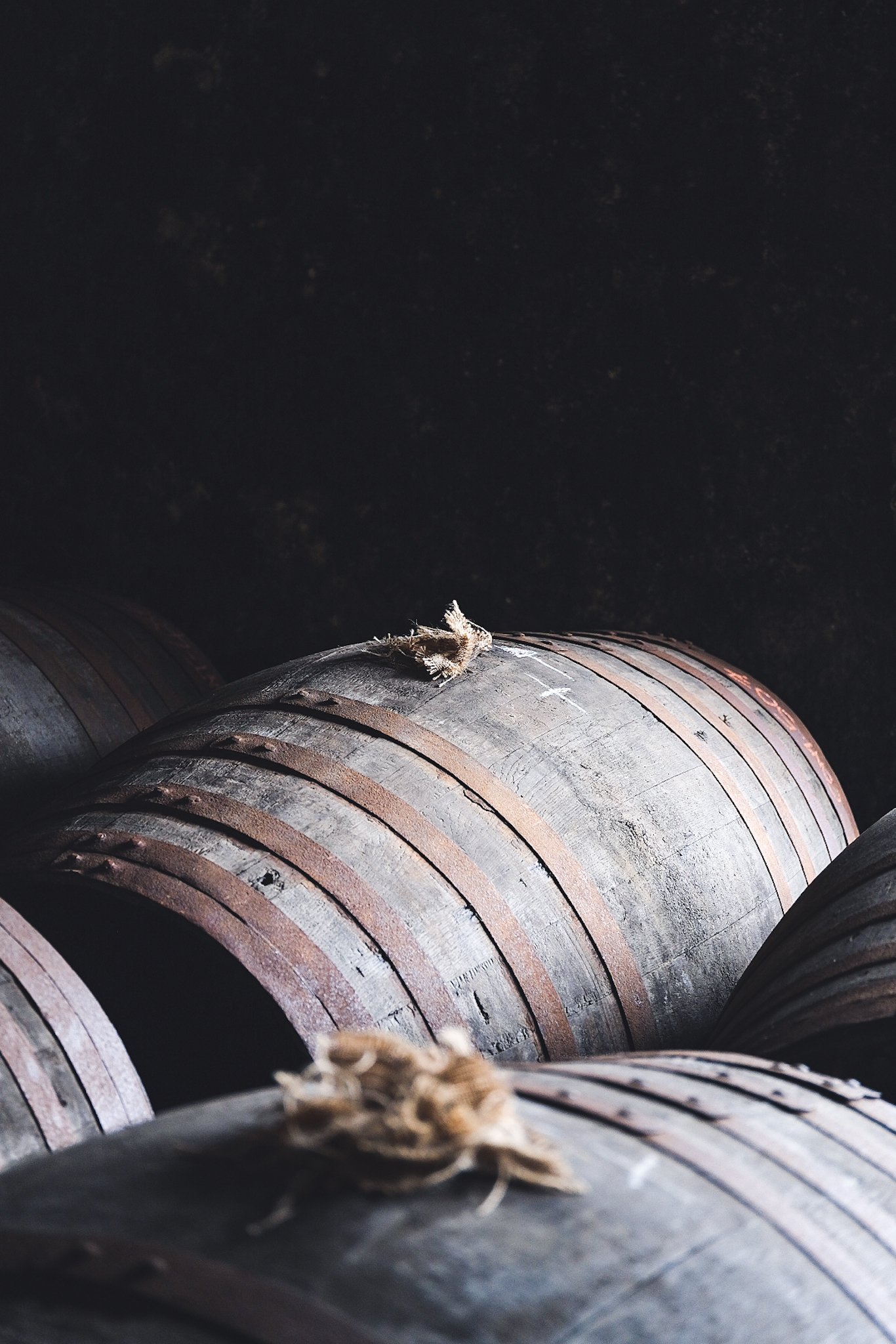
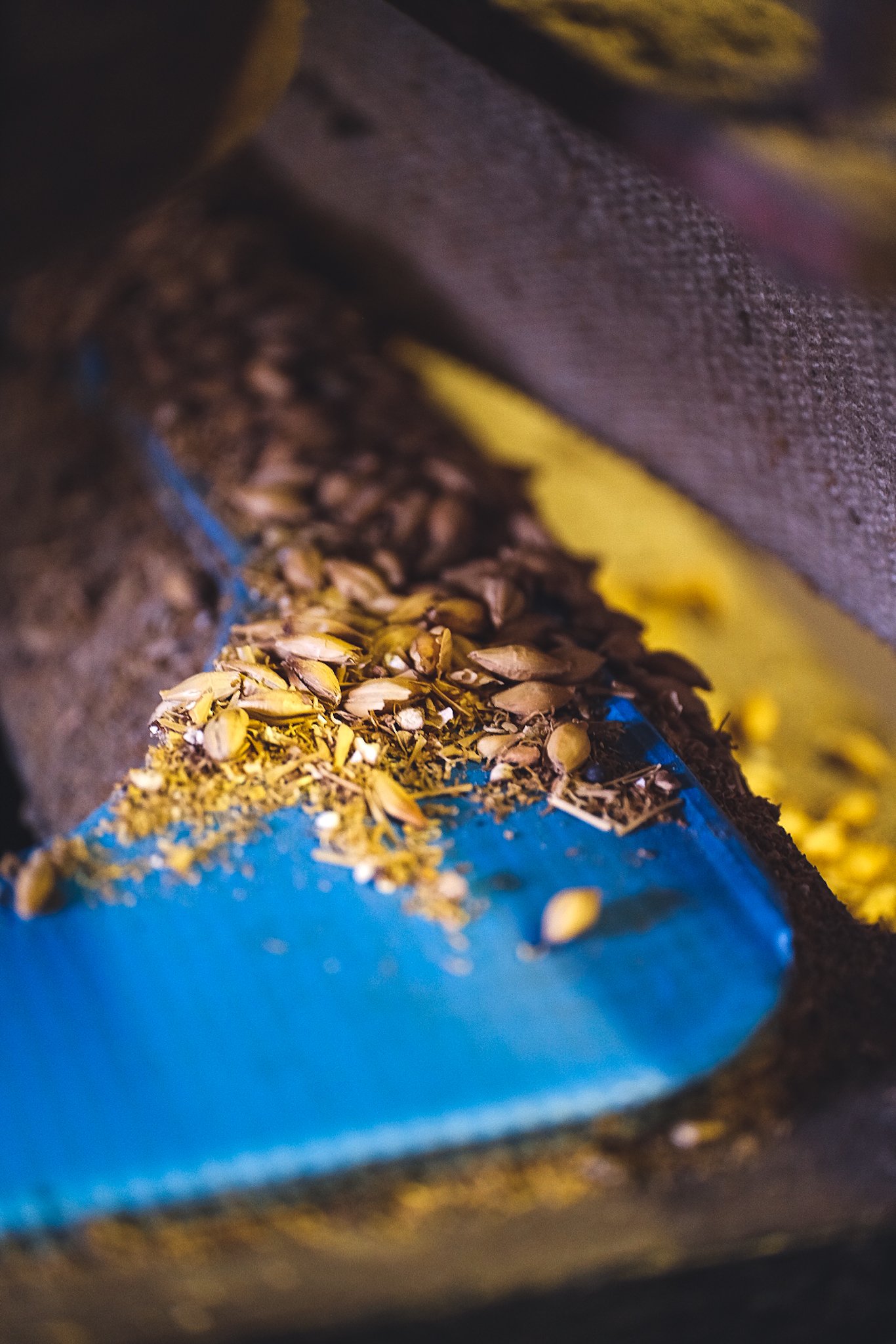
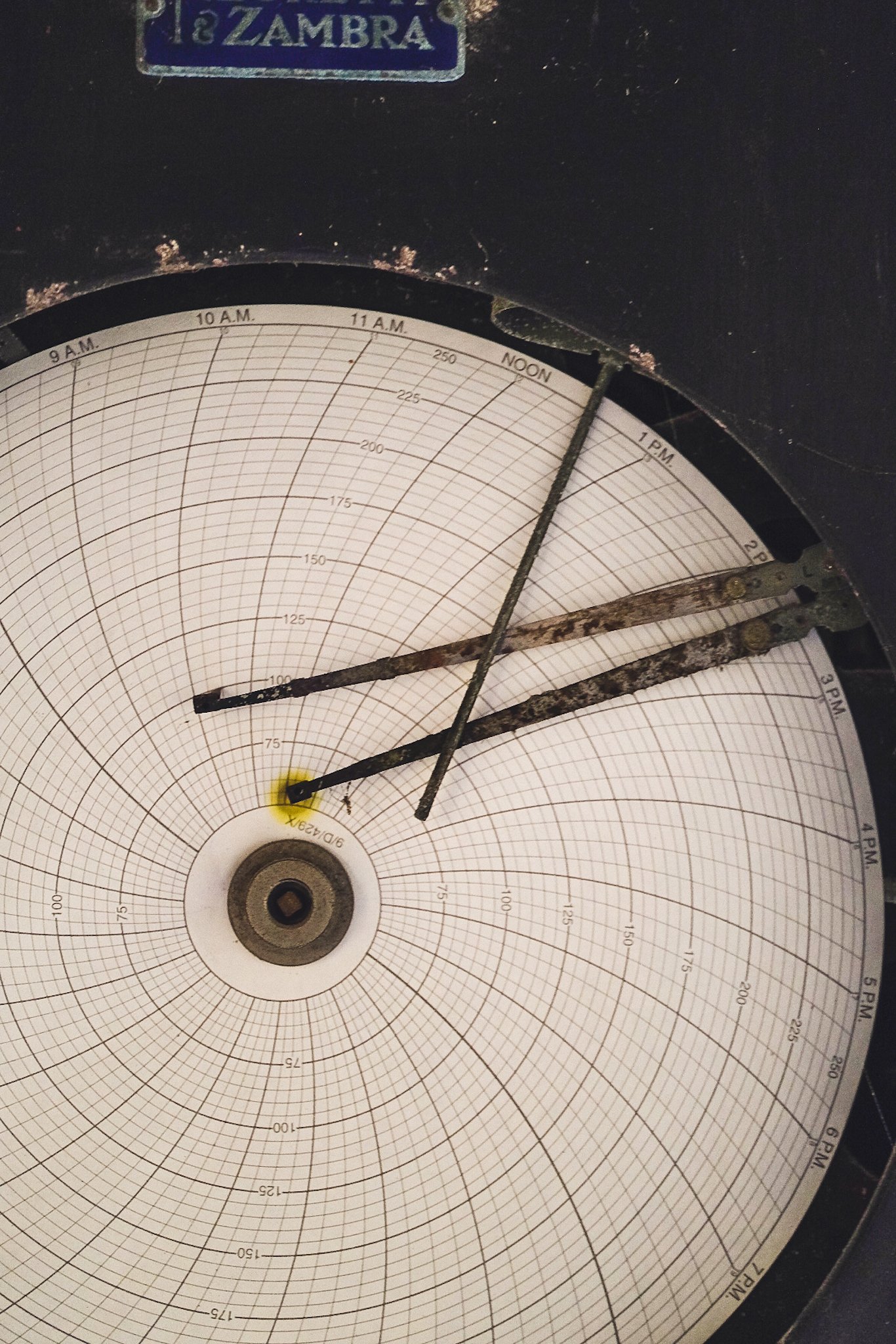
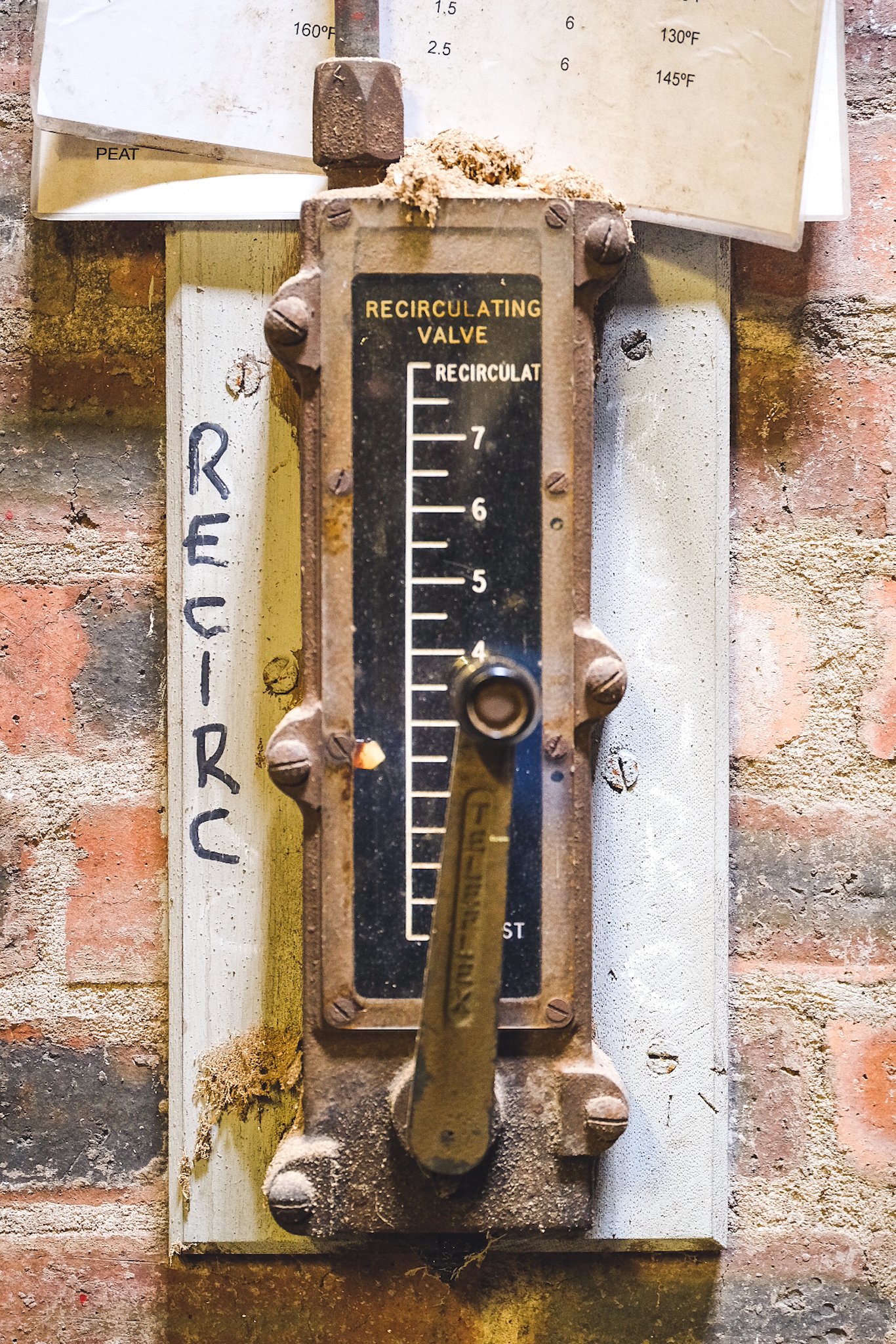
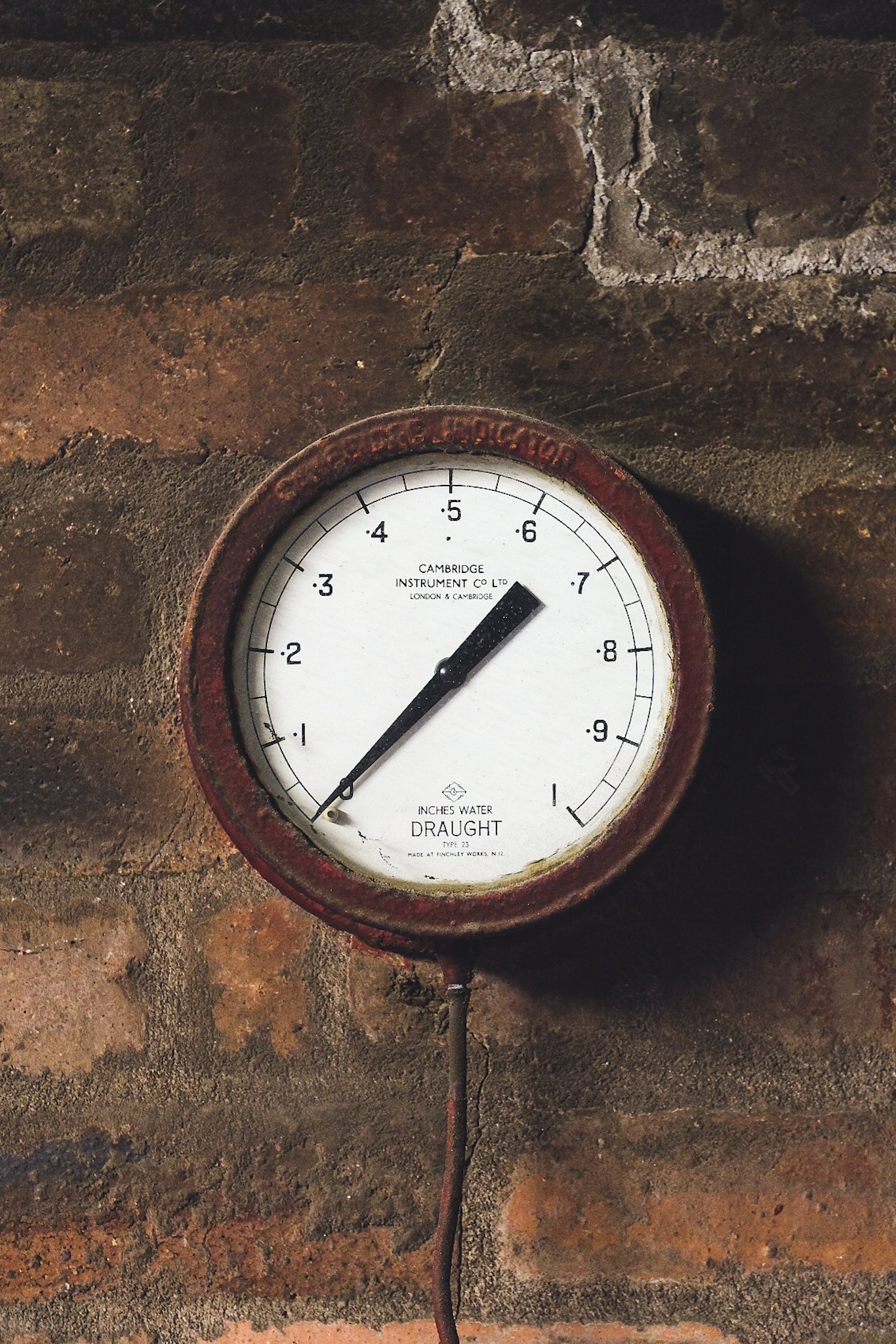
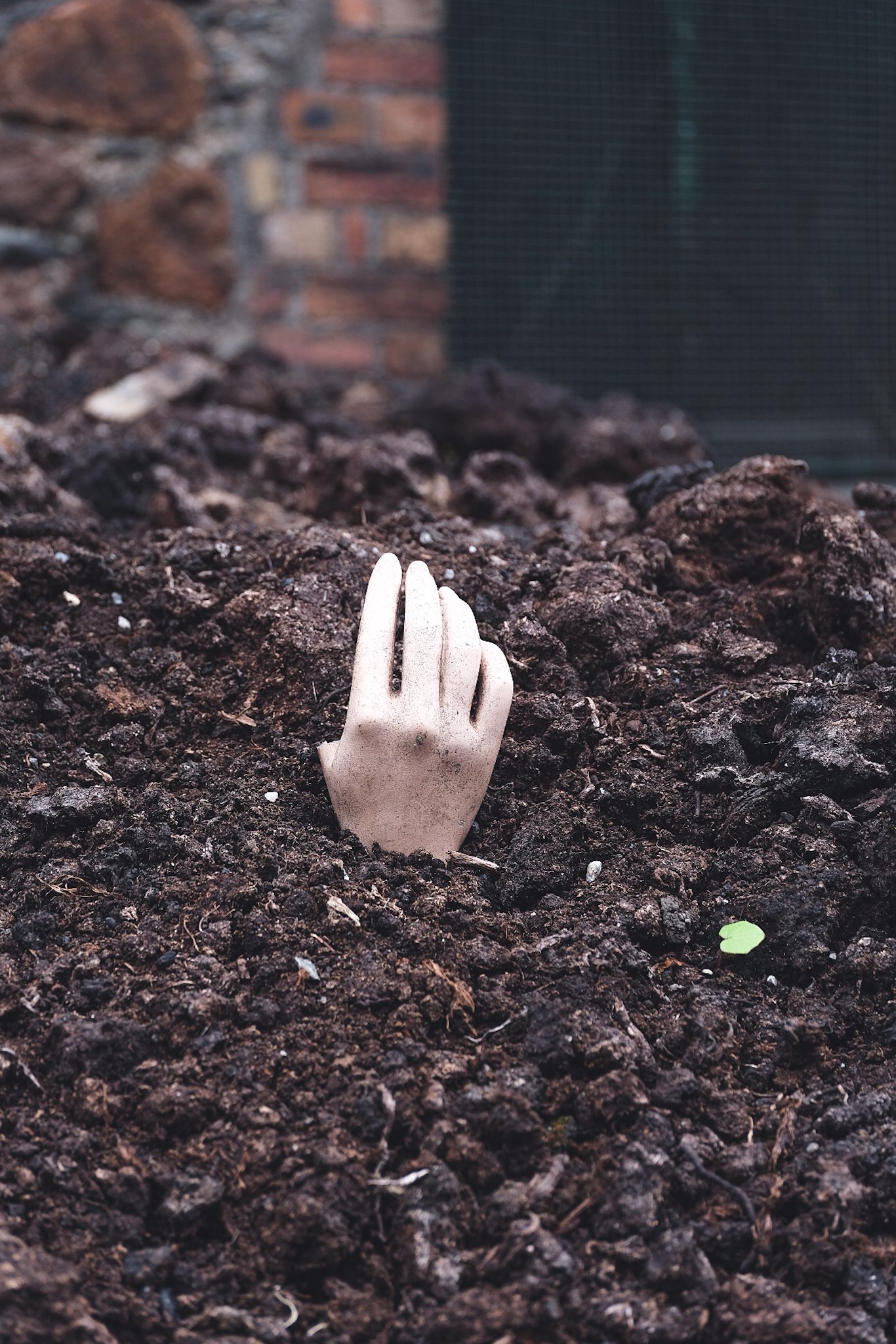
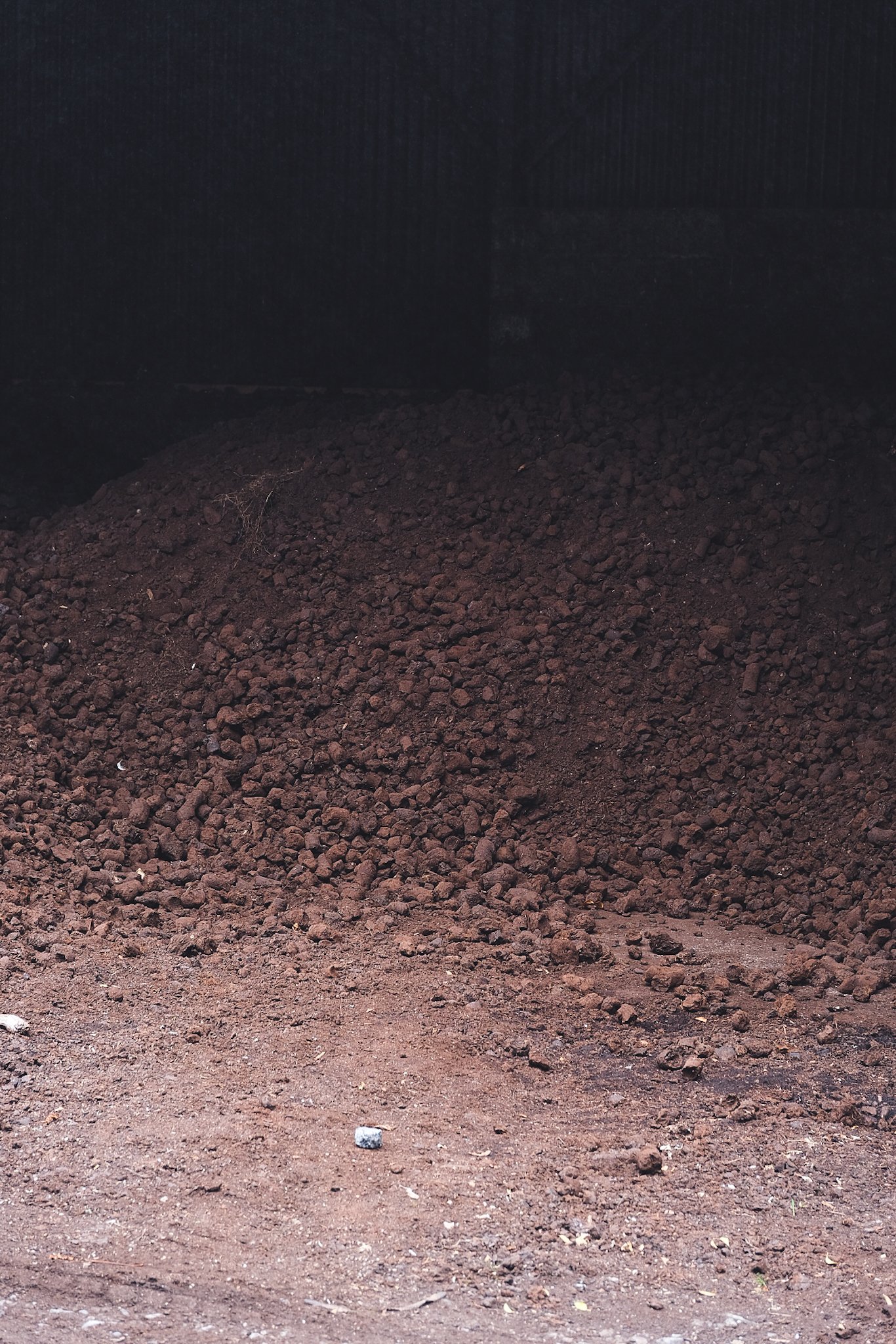
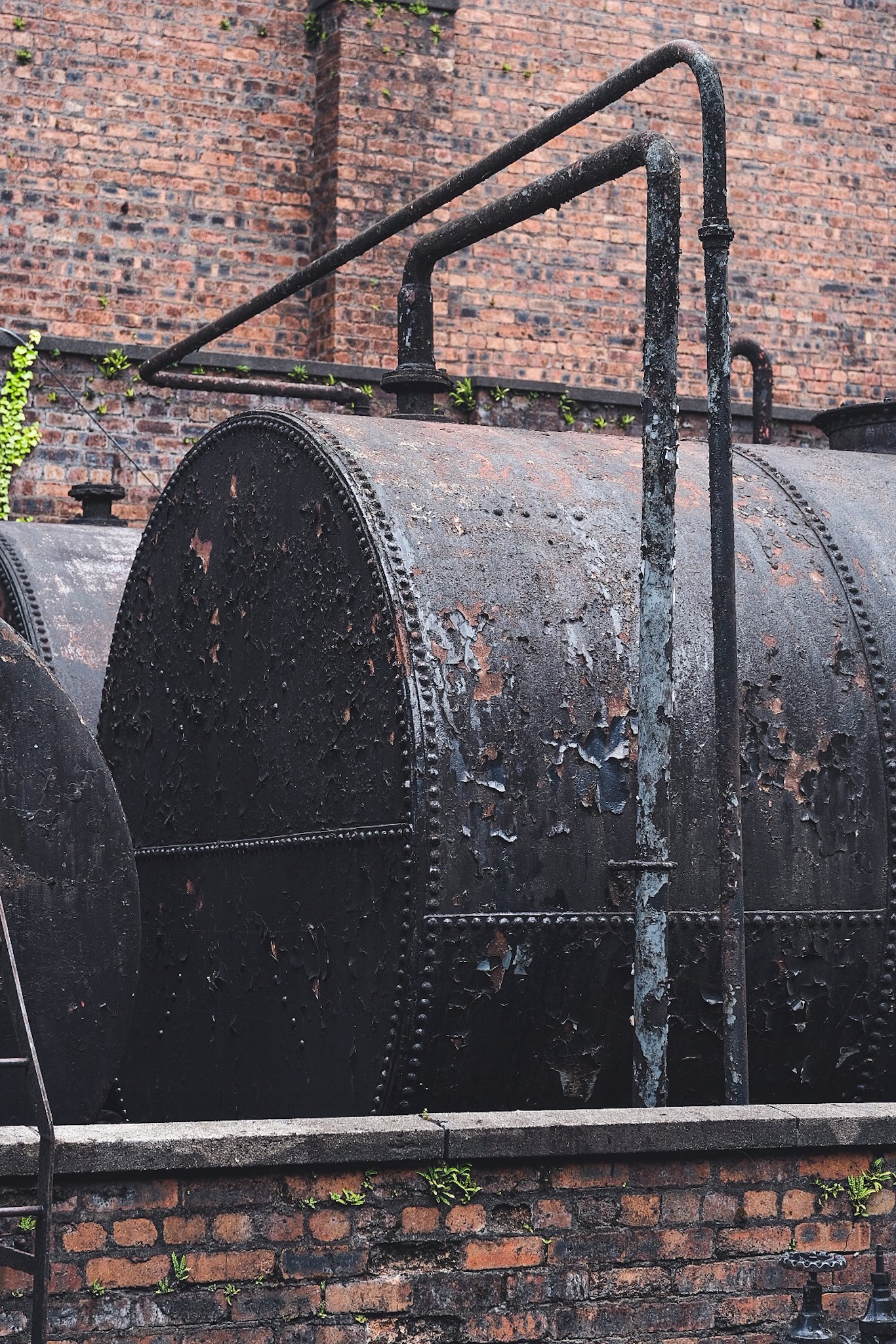
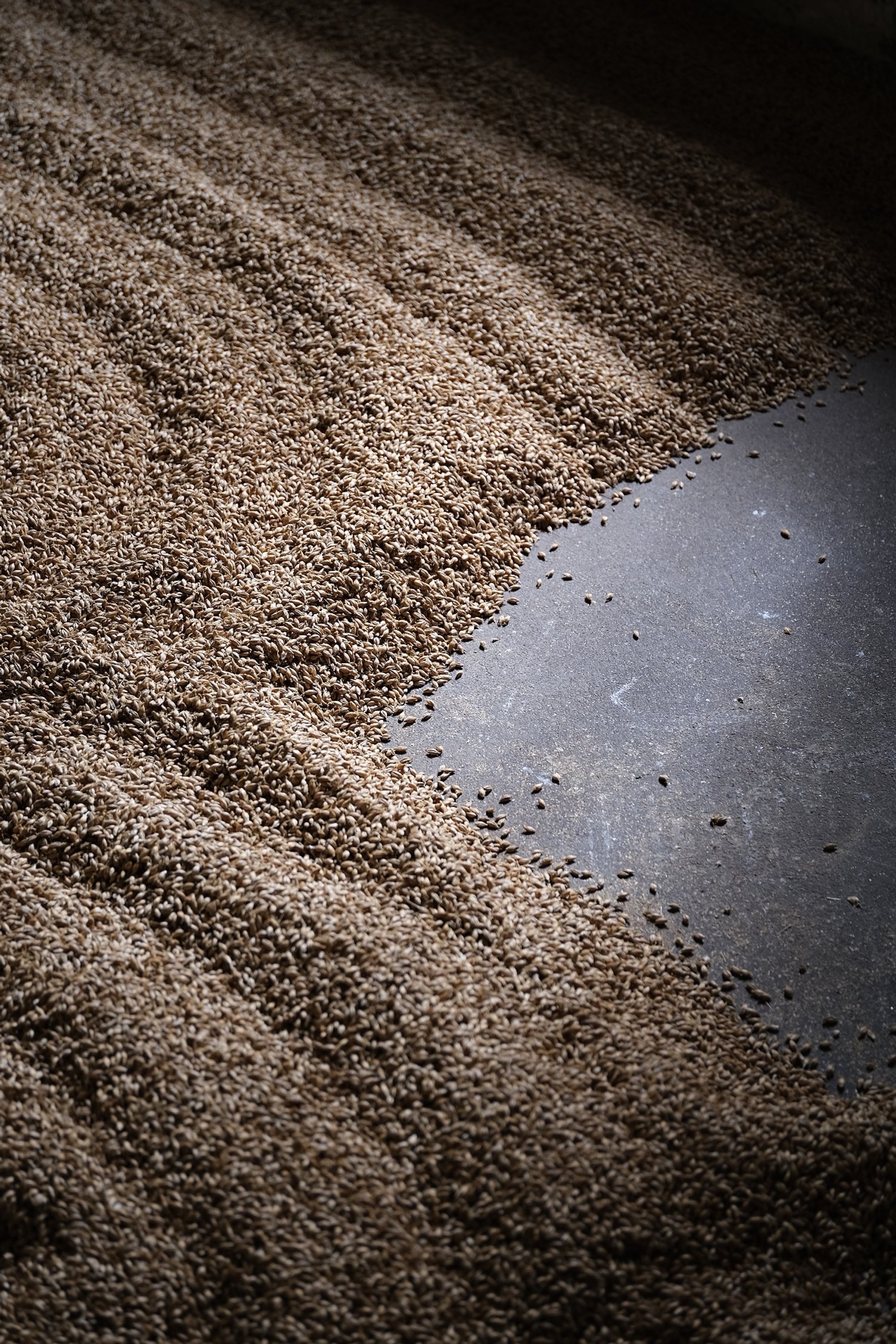
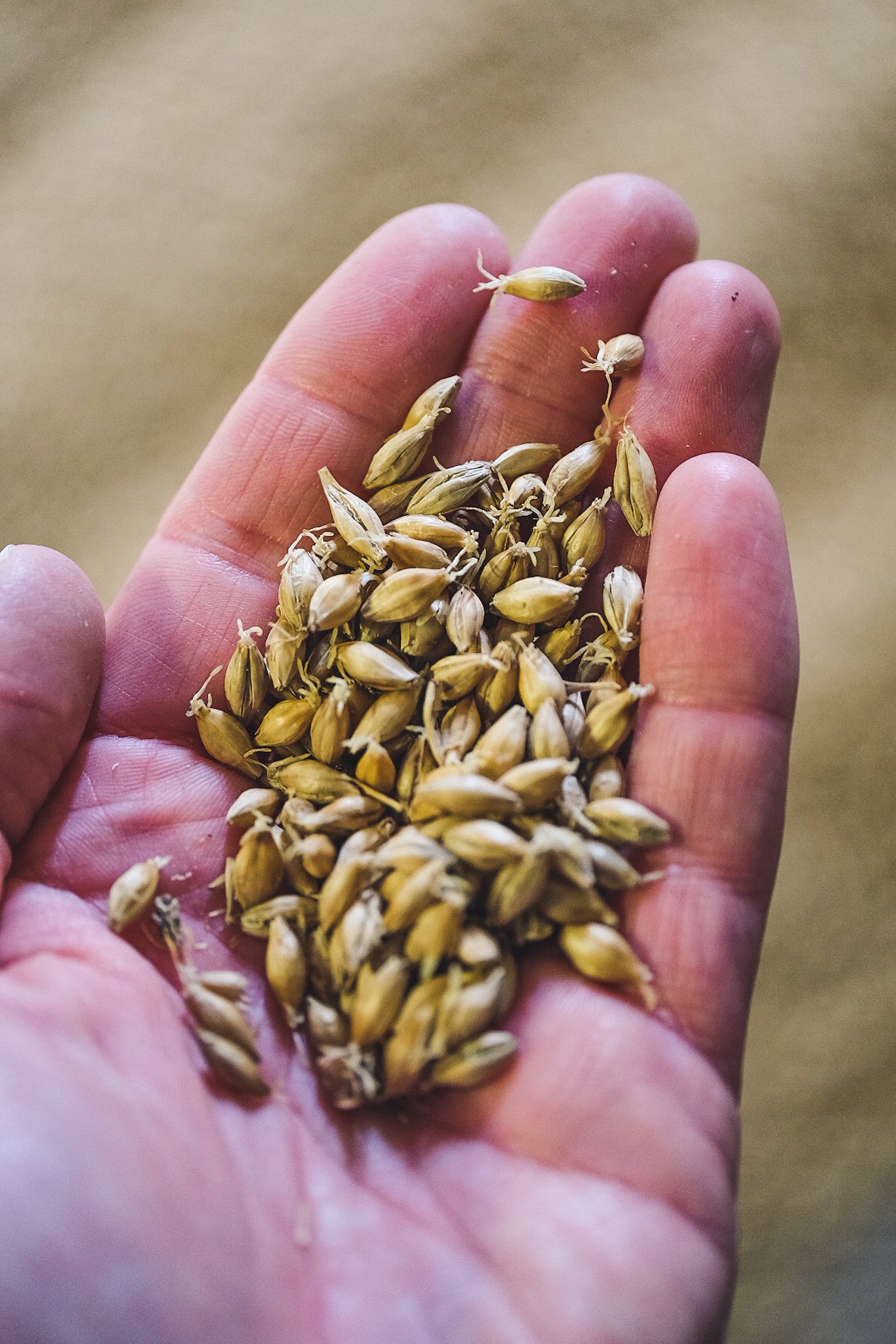
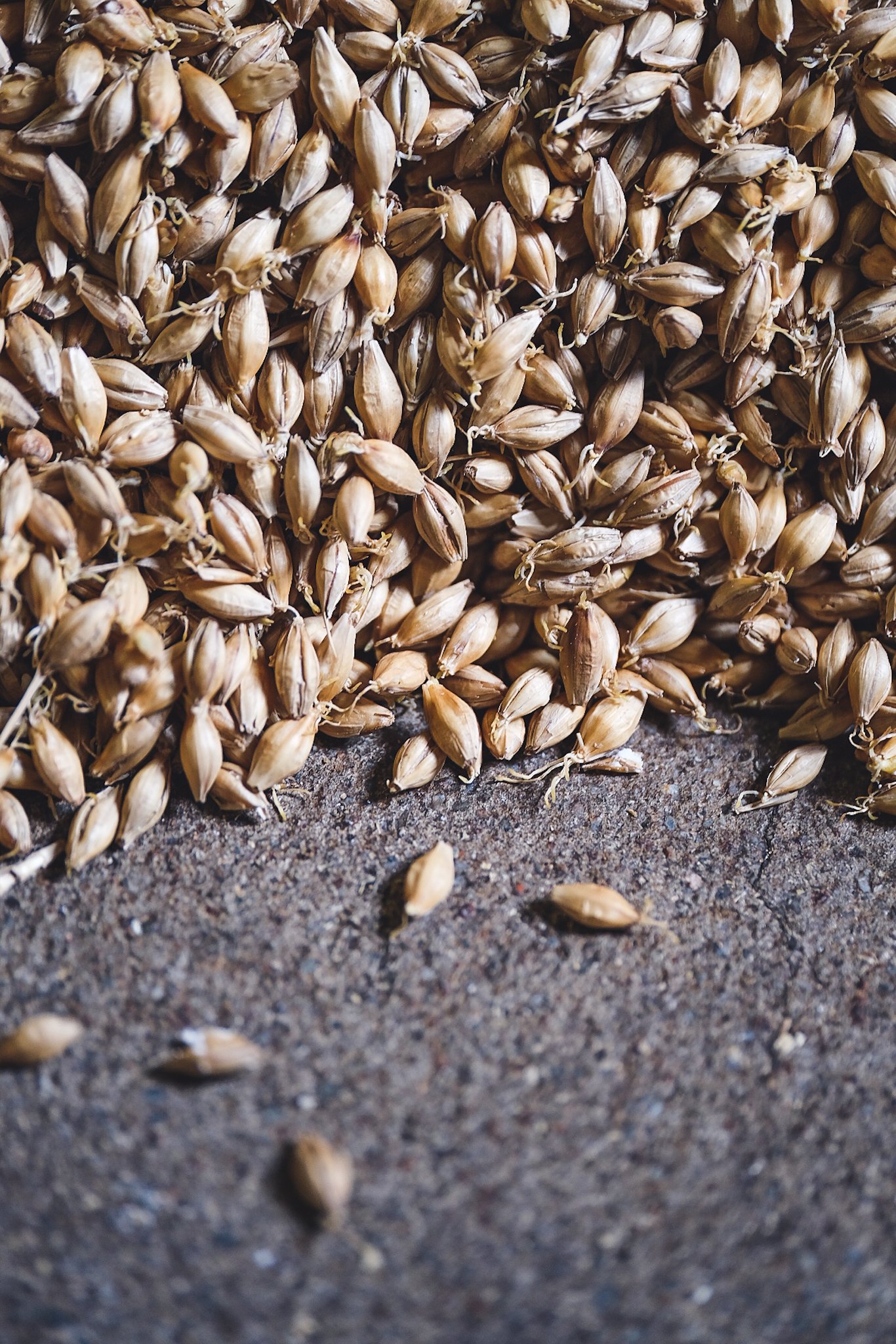
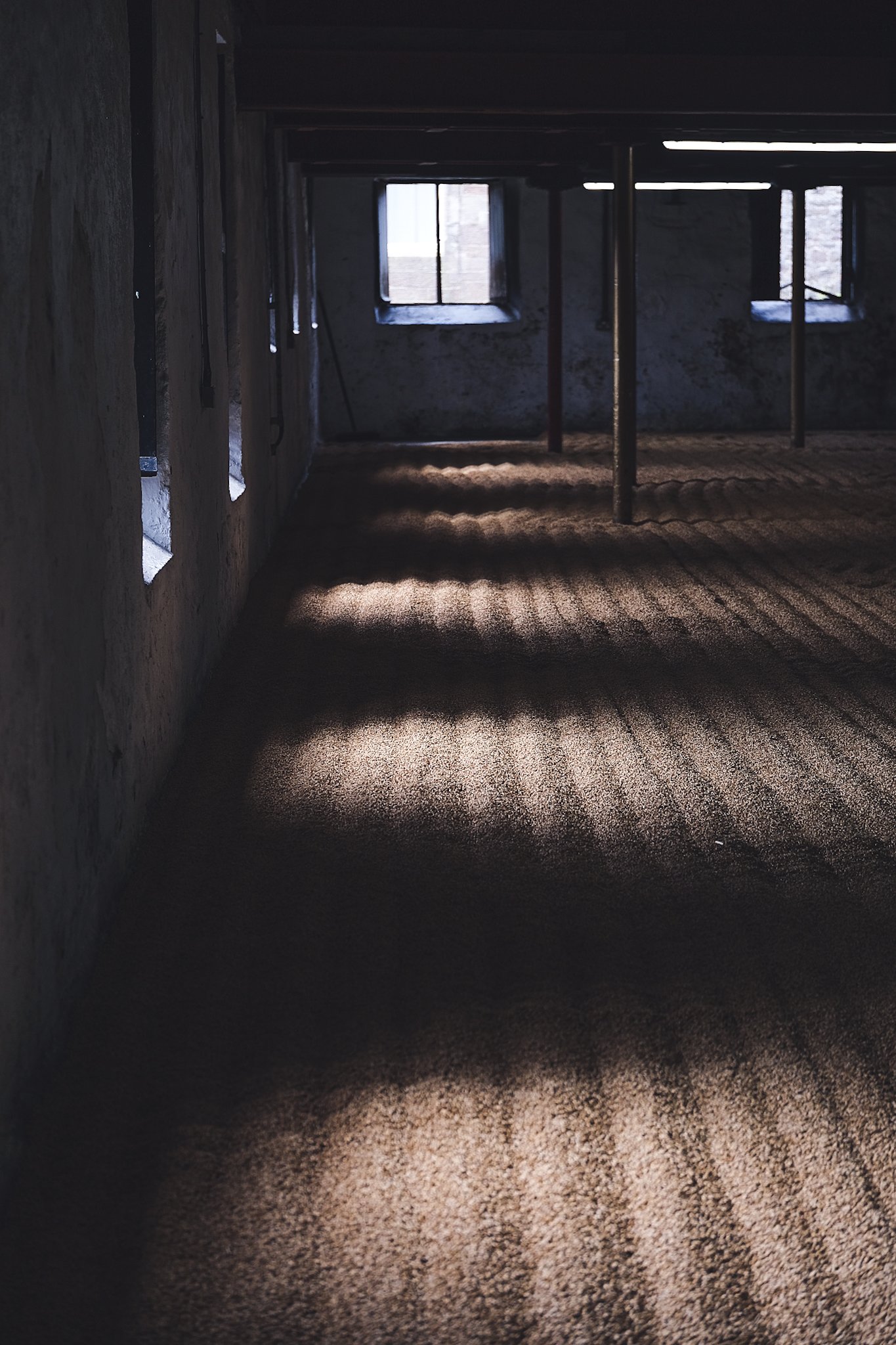
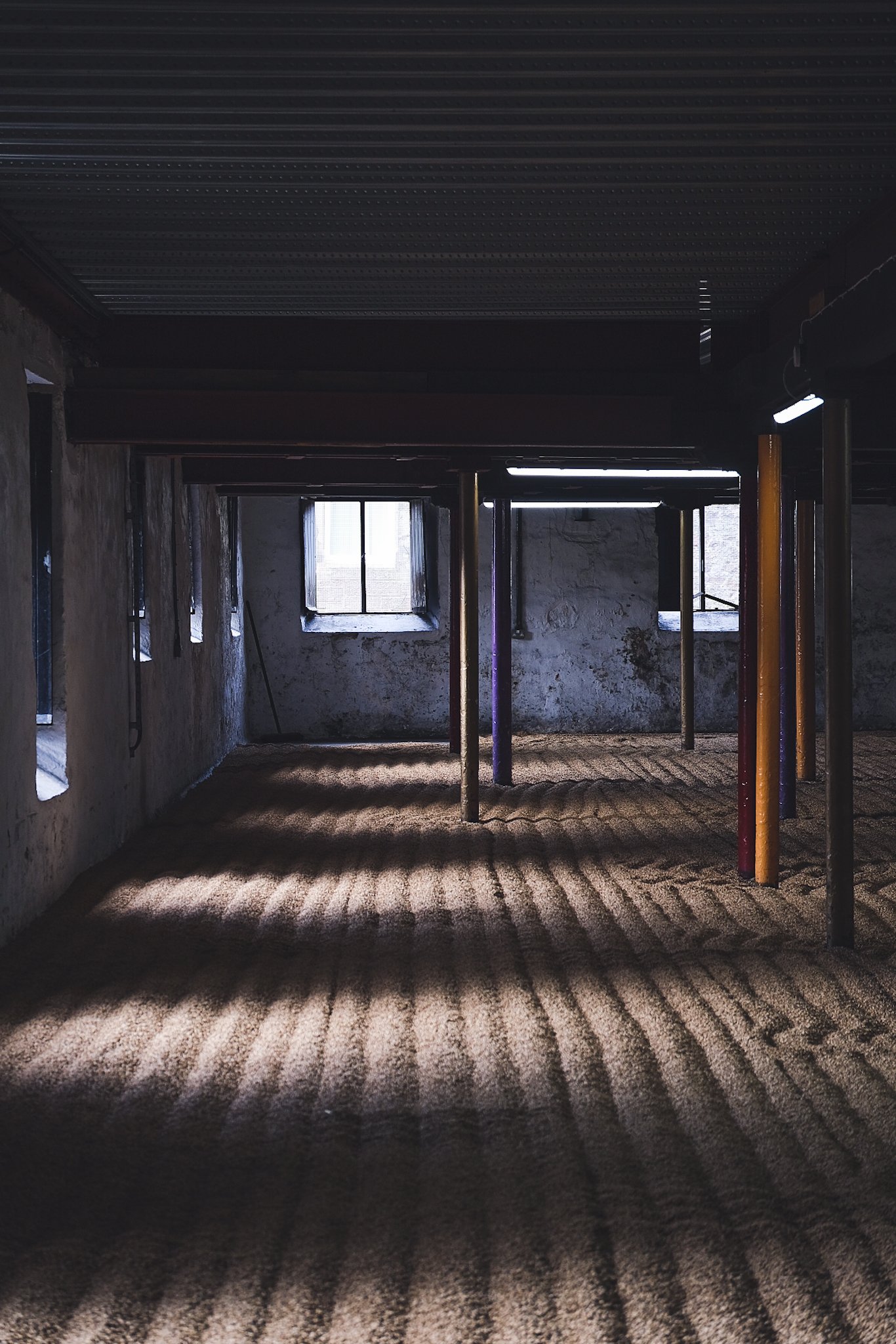
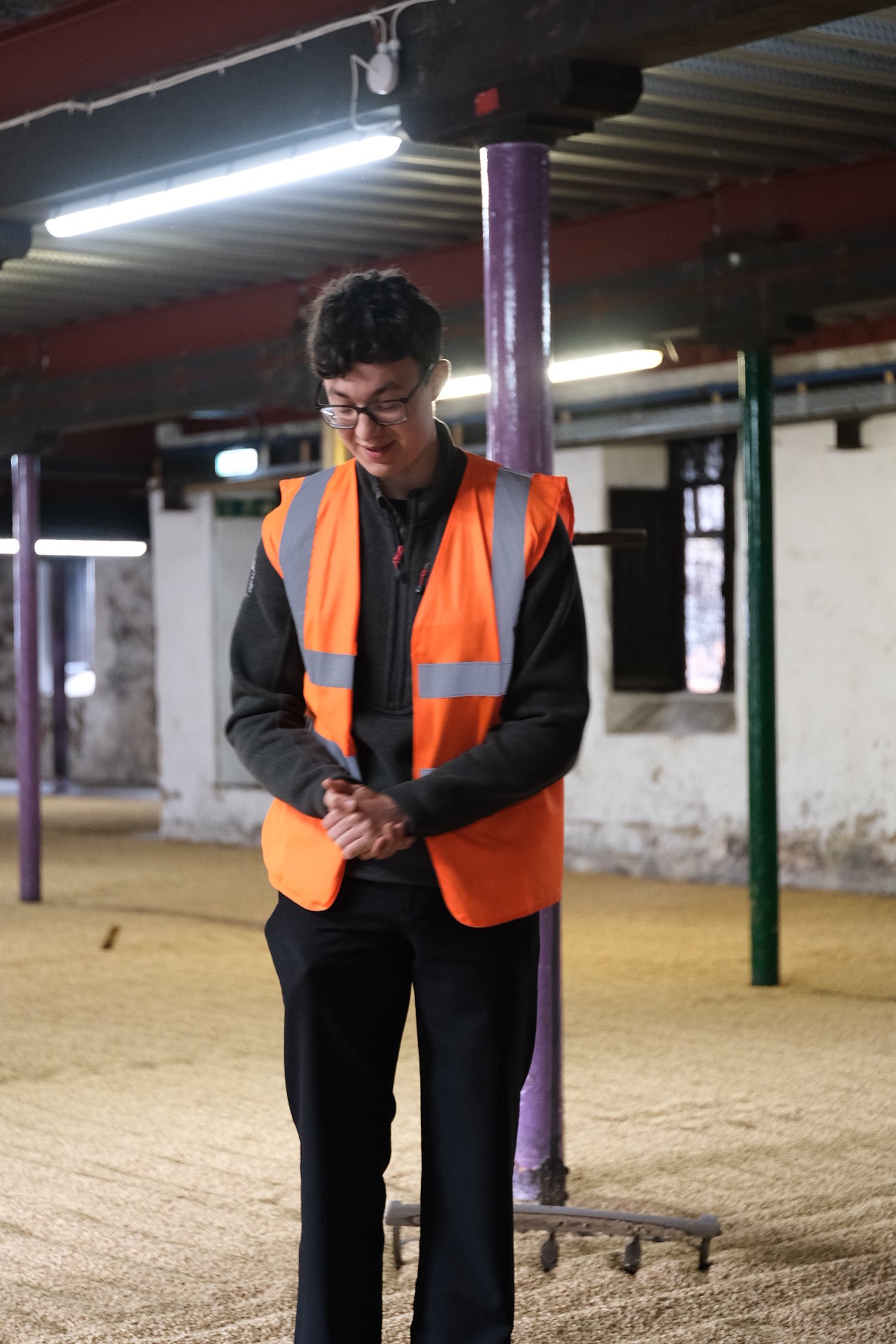
Stepping back down the steel stairs to the long still room, we get a brief overview of the 2.5x distillation that Springbank performs, and then we’re shown the spirit safe. I assumed a spirit safe needed to be locked – it’s called a safe after all – and it’s the only state I’ve ever seen a spirit safe in, but here it’s unlocked and the lid wide open. I stick my head over and have a good sniff. It’s a bright, sweet and delicious smell. The reason it’s open is that the very last tail cut – around 1% ABV – is dripping into the patinated pots. This’ll head back into the system to be distilled again. The copper stills are appraised, photos are taken, questions asked before we head through another brick aperture to see the area where the new-make spirit is casked, followed by one of the many dunnage warehouses on-site. It’s slick, quick and effective. This place and the people inside know what they’re doing, and are going about it their own way: by that I mean how they’ve done it for decades. Nothing is bright and shiny here. The various instruments, tools and implements are all covered in patinas and marks from the hands that have commanded them for those decades. The stills are dark and unpolished – each machine, tub, container and padlock show the rigours of time. It’s what makes this place so charming.
As we stand in the dunnage warehouse and look around the casks sleeping inside, a figure appears silhouetted in the doorway. At a natural break in Ben’s final words, he announces he’s looking for the two stragglers heading for the Cadenhead’s warehouse tasting. We raise our hands and follow him outside, where he asks us to wait while he gathers up the other folk patiently waiting in the shop. We feel guilty immediately. The earlier delay really did set everyone back, and I awkwardly consider my own hand in our lateness. The sun is shining now, unexpectedly, and the six other willing participants appear behind a striding Grant; our malt master for the next hour. We are headed towards the Number 7 bond.
Springbank: Suffering Success
The remainder of the day was spent discovering incredible whiskies inside Cadenhead’s warehouse, strolling down to the Cadenhead’s shop once more to pick up a few of the tasting bottles, and then making our way to Glen Scotia. Here we would meet Dramface podcast host Gregor McWee who was fresh off the boat after a blitzing of Islay and take a fantastic tour around the distillery, and conclude with an even more fantastic dunnage tasting set. The contrast between the two Campbeltown distilleries couldn’t have been more different. Where Springbank is small, it’s also buzzing with many staff wearing high-vis jackets and making sure everything runs perfectly. Ben was slick, fast and assured – scripted and rehearsed perhaps, but able to answer most questions with ease.
Glen Scotia is a little smaller and on the day we visited it was staffed by just Archie and Cheryl. Archie took us around the distillery, imparting the Glen Scotia way in his own unique style – that of a man working on the coal-face of whisky production. He was the only one tasked with production duty that day, yet delivered our walkabout with an informative and passionate ease. He was able to show us things that we might not otherwise have, including tasting Glen Scotia new-make at 68.6% ABV and cooing at the ease at which it slipped down our throats – fruity, viscous and delicious. We also stood speechless as we watched a wash still being filled at a speed usually reserved for natural geysers and learned about their production rates that, going by the hard stats, are arguably the slowest distilling methods deployed in Scotland. Dumgoyne might have to rethink their taglines. Finally, we were handed over to Cheryl and basked in the glory of five sensational Glen Scotia malts delivered from the cask. This is what whisky dreams are made of.
It was a rare end to a rarer day. Over a yacht-oven cremated pizza dinner, we agreed that, although we loved the impressive tour of the inimitable Springbank, we could see quite clearly the turmoil at which the staff at the distillery are being spun through at the minute. They obviously want to do things how they’ve always done – quietly and confidently – but are currently being served a supremely challenging confluence of insatiable demand, feverish desperation and absurd profiteering from punters. All this while trying to wrestle the situation to their benefit by having their products regularly available, weathering the surge of daily demand on-site and most of all, sustaining – that’s the big word floating on everyone’s lips. But the staff are doing it all with a befuddled smile and a knowing shrug of the shoulders. This is what Springbank has become and they’ll ride it out as long as possible. Glen Scotia too are feeling the pinch, but their pressing matter seems to be more of a feet-on-deck issue. Some fresh faces are desperately required to support the growth of interest in Glen Scotia and the indication of increased production issuing from the upper echelons of the Loch Lomond Group is only going to make matters worse for folk like Archie. I hope both Springbank and Glen Scotia can keep things on an even keel.
I picked up three bottles in the Springbank shop over the course of my two days in Campbeltown - two hand-fills and a cage bottle. I reviewed the Springbank hand-fill in yesterday’s review, so I would like to appraise the cage bottle now while the trip is still fresh in my mind. I expect all of these bottles to get far better by the time they’re half-way down. I’ll consider these cask strength beauties alongside a core range bottling of Springbank 10, just to get some semblance of control in there and to see what, if any, difference there is.
Review
Springbank 10 year old | 2011 | Warehouse 6, Rotation 600 | First Fill Bourbon | NC | NCF | 59.9% ABV
£65 occasionally available at the distillery. 1 per person, per week.
Nose
Sweet earthy perfume. It’s a fresh bourbon barrel, so vanilla is in abundance but there’s also a red fruitiness which strangely brings to mind sherry. Sweet smoke. Vulcanised rubber pivots to swimming pools pivots to sweaty squash courts. Cedar wood is in abundance – think a freshly-steamed sauna smell. With water a creaminess evolves and yet the spice remains. A really settled whisky. It doesn’t flap around many different flavours like the Benromach 11yo so wonderfully did.
Palate
Refined. Bold flavour bursts through, yet it has a tamed alcohol arrival despite the high ABV. A sweet baking spice developing into a green fruity note with lime zinger at the tail end. Oakiness pervades. Spiced toffee and a bit of heat. Sweet toffee now. Dusty heather covered earth and green bell peppers. Toffee but eaten with a small parma violet kicker - herbal yet also wild-planty. Supremely delicious whisky. I think, even after just the shoulder pour, this will settle into a phenomenal whisky. With water some red-fruit notes start to appear, in particular a nice pop of tart raspberries. A beautiful dram.
The Dregs
Alongside the 10yo core expression, the special “Cage” bottling, as well as the Hand-Fill reviewed in Part 1 - both cask strength whiskies - are obviously going to deliver much more flavour and impact. However what I didn’t expect when going back to the core bottling, was how much weaker in smell and taste it seemed. Springbank 10 is no shrinking violet, so the only conclusion I can come to is that these cask strength bottlings, in particular the cage bottle, are the nearest I can get to a pure, unadulterated Springbank character. Tasting these whiskies is an utterly joyful experience. They’re both packed full of flavour, each develop over the course of the dram and have lasting, memorable finishes. On the one hand I can see why people are so keen to get their hands on them to experience the flavour odyssey themselves. But I also see how easy it would have been for me to stick my cage bottle in an auction and get back triple what I paid for it. That’s because, like it or not, Campbeltown is ridiculously laborious to get to. When you factor in travelling costs, hotels, transport and the cost to buy the bloody thing, it probably works out cheaper to pay inflated prices on auction sites. I’m very lucky that I live in Scotland and can, with a bit of lengthy mileage, get to Campbeltown relatively easily. Some don’t. Some can’t. We play the cards we have in our hands.
The thread that weaves through most of our time in Campbeltown is that of the potent demand for the style of whisky this little working town puts out. It’s clear that the influx of interest in Campbeltown whisky has benefitted not just the distilleries, but the town as a whole. Whisky-based tourism has permeated throughout the streets and into all of the little places that support their main industry. Despite some areas still in need of that uplifting hand, I left Campbeltown totally charmed – the future of whisky production here is on the up, with plenty of new distilleries in development. It stands in complete contrast to the thoughts I held when I arrived; ready to shun Springbank on account of me not being able to easily obtain the core bottles. I was happy to forgo the experience of Springbank’s distillery, people, practices and ultimately their products because Springbank is just not accessible enough for me. To get all excited with tours and shops and wrestling, it felt a bit pointless. How wrong I was. How naive to believe it in the first place.
I was reminded that behind all the ludicrous nonsense surrounding Springbank, all the shameless profiteering and unjustified price hiking from retailers, are people. People getting on with it. Passionate people who love their jobs and love their town, eager to help and excited to engage on the topic of whisky. At heart they’re all whisky fans who love the diversity of the spirit as a smell and taste experience; people who know this fight for cage bottles at 10am on a Friday is a bit silly, but means that the future is secure for them all. A necessary evil, if you will, and I totally respect it, and I totally get it now.
It doesn’t mean that I’m suddenly going to have shelves groaning with Springbank, but it does mean if I ever get the chance to try a new Springbank, visit Campbeltown again or get asked my opinion about the whisky they make, I’ll do so with gushing praise and sage, deferential nods for the folk just getting on with making incredible whisky. It was the people that made our visit so wonderful: Joyce at Cadenhead’s, Archie and Cheryl at Glen Scotia, Ben our Springbank tour guide, and finally the chap who helped me bat away the braying hordes inside the Springbank shop. I wish I’d caught your name, for you were the best of the bunch.
Walking down the lane towards Cadenhead’s shop, he shouted after us and we turned back to talk to him. He asked if we’d enjoyed our tour after my reluctance in the shop the day before. He was away for his lunch before heading back into the frenzy, and wished us well on our continued voyage home. When we did arrive home, it felt like we’d had a genuine human experience in Campbeltown. This is what it’s all about, isn’t it? Interacting and engaging with like-minded folk and in the process having an experience that we will remember, regale and wistfully mourn when inevitably the situation changes. We had a day of supreme whisky enjoyment, met interesting people and learned a thing or two, not just about whisky, but about ourselves too. Not bad for a Tuesday, Sir. Not bad at all.
.
Score: 8/10
Tried this? Share your thoughts in the comments below. DC
-
Dramface is free.
Its fierce independence and community-focused content is funded by that same community. We don’t do ads, sponsorships or paid-for content. If you like what we do you can support us by becoming a Dramface member for the price of a magazine.
However, if you’ve found a particular article valuable, you also have the option to make a direct donation to the writer, here: buy me a dram - you’d make their day. Thank you.
For more on Dramface and our funding read our about page here.
Other opinions on this:
Got a link to a reliable review? Tell us.












































































